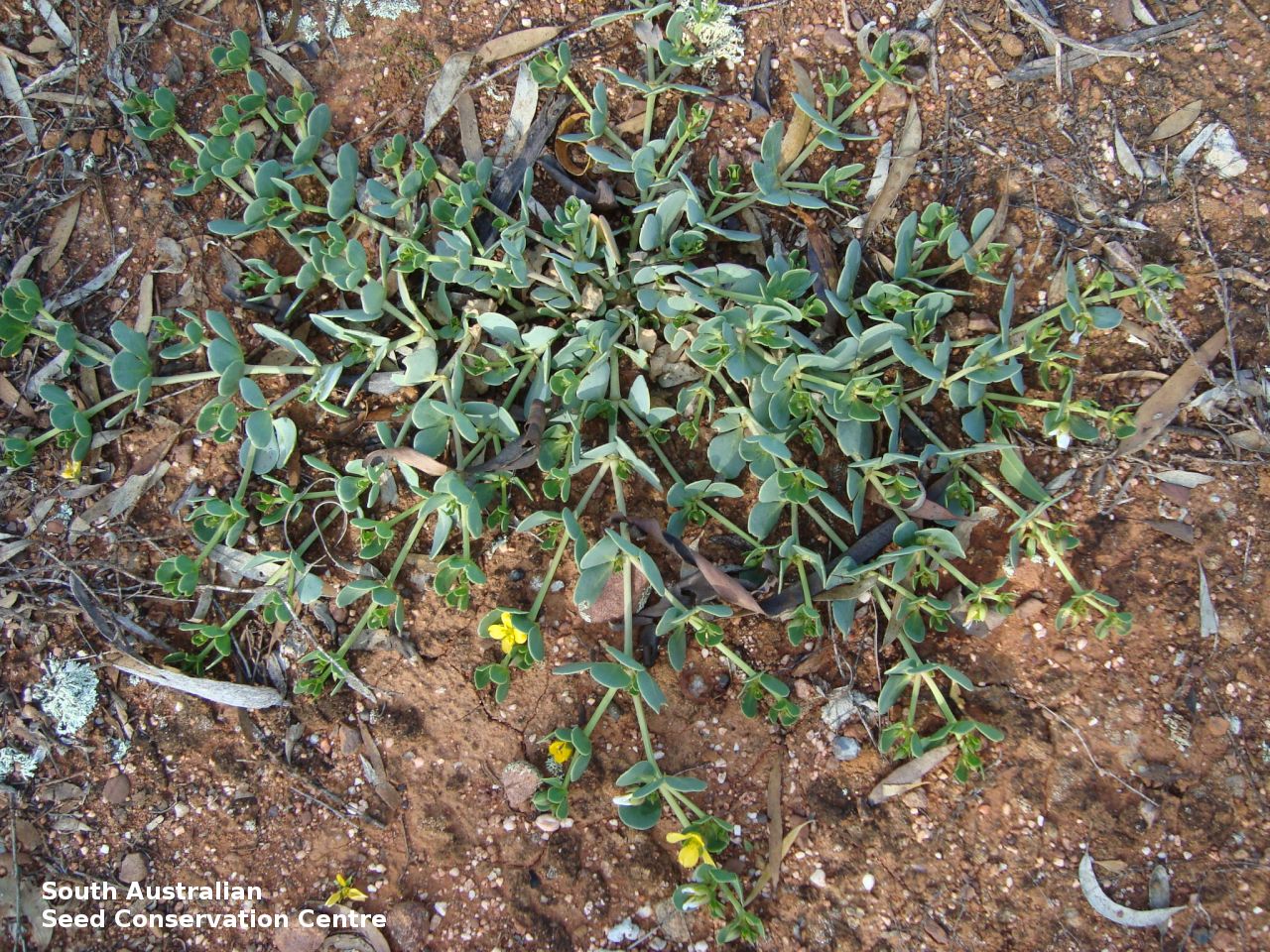
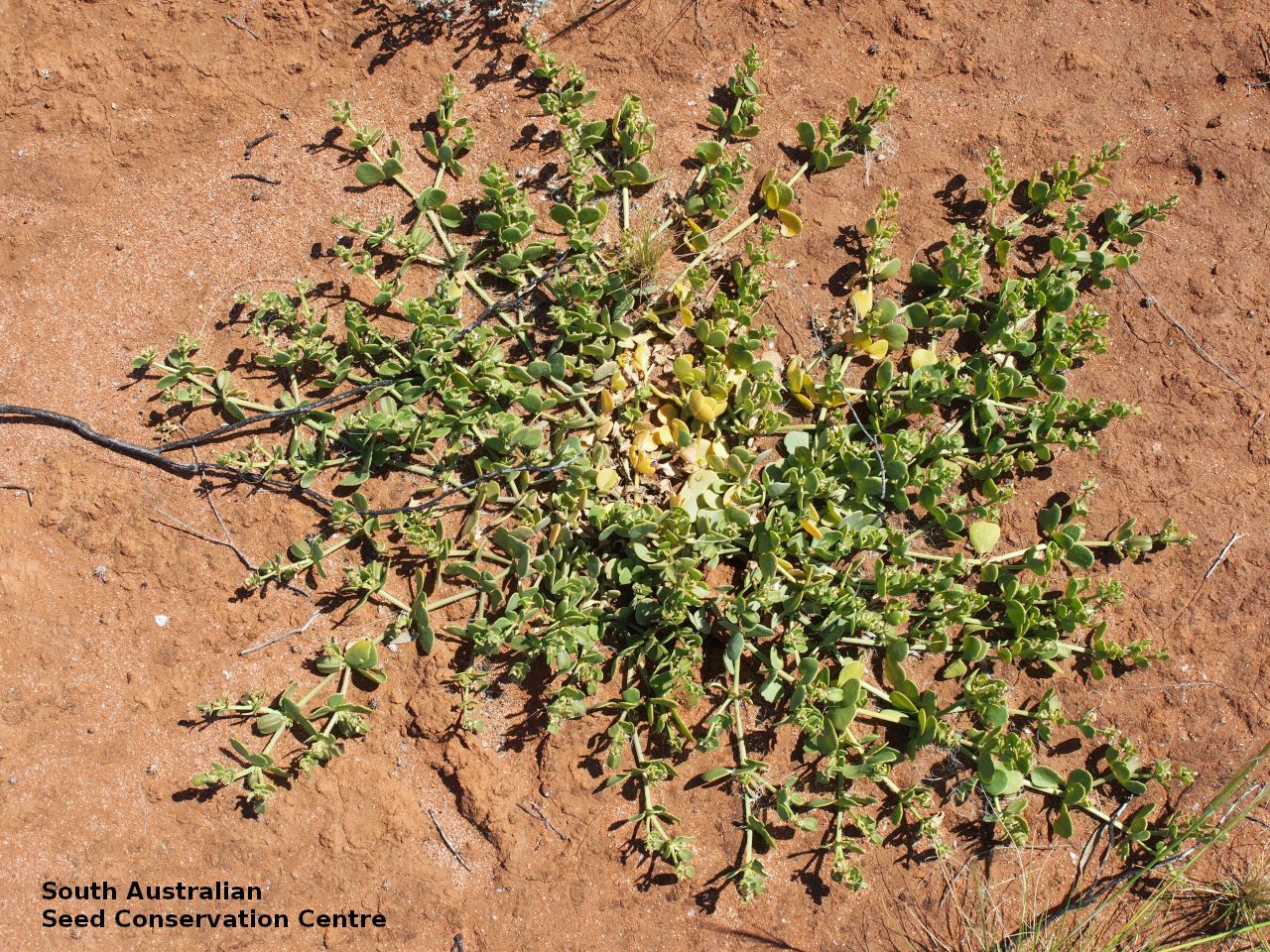
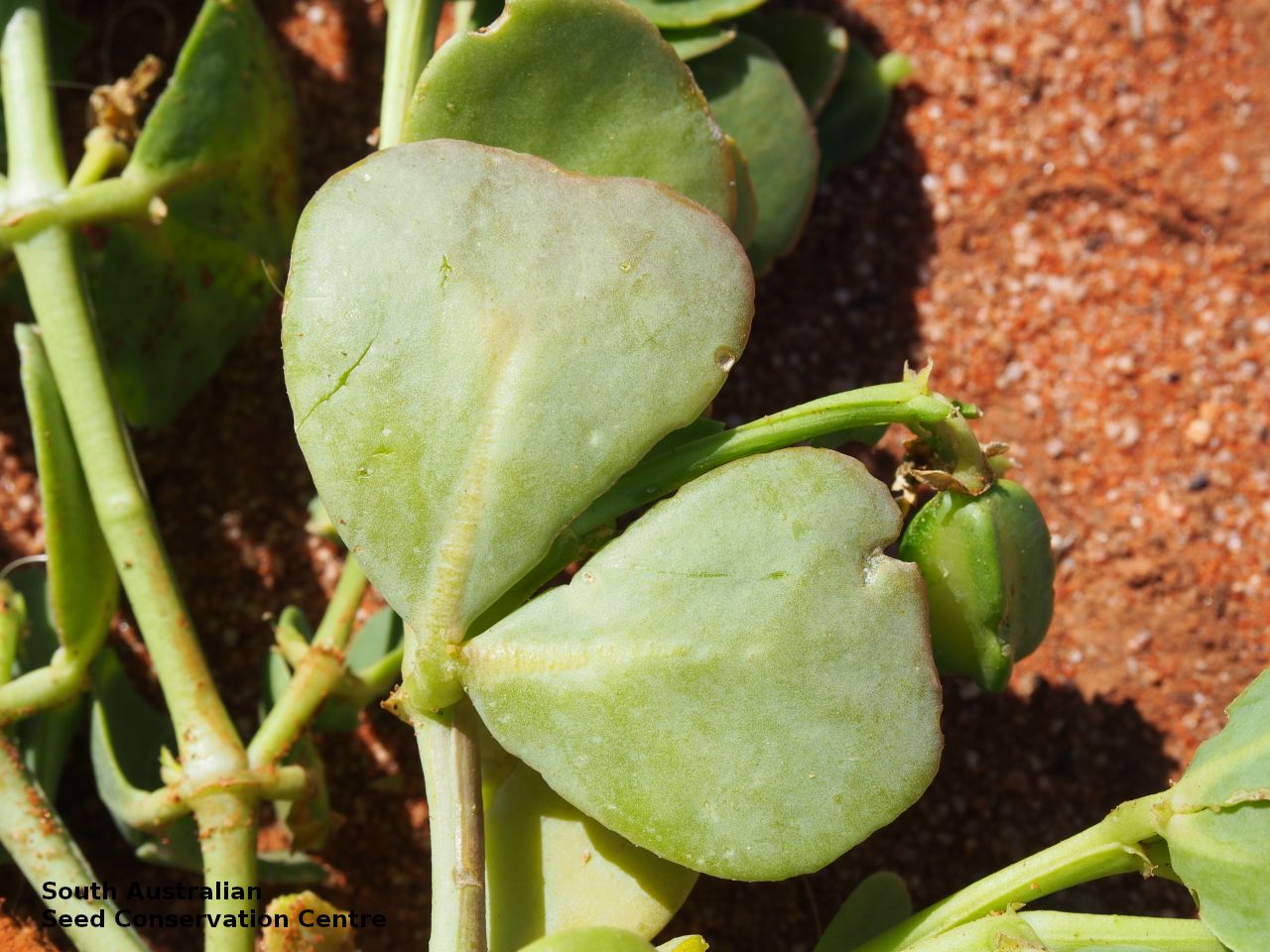
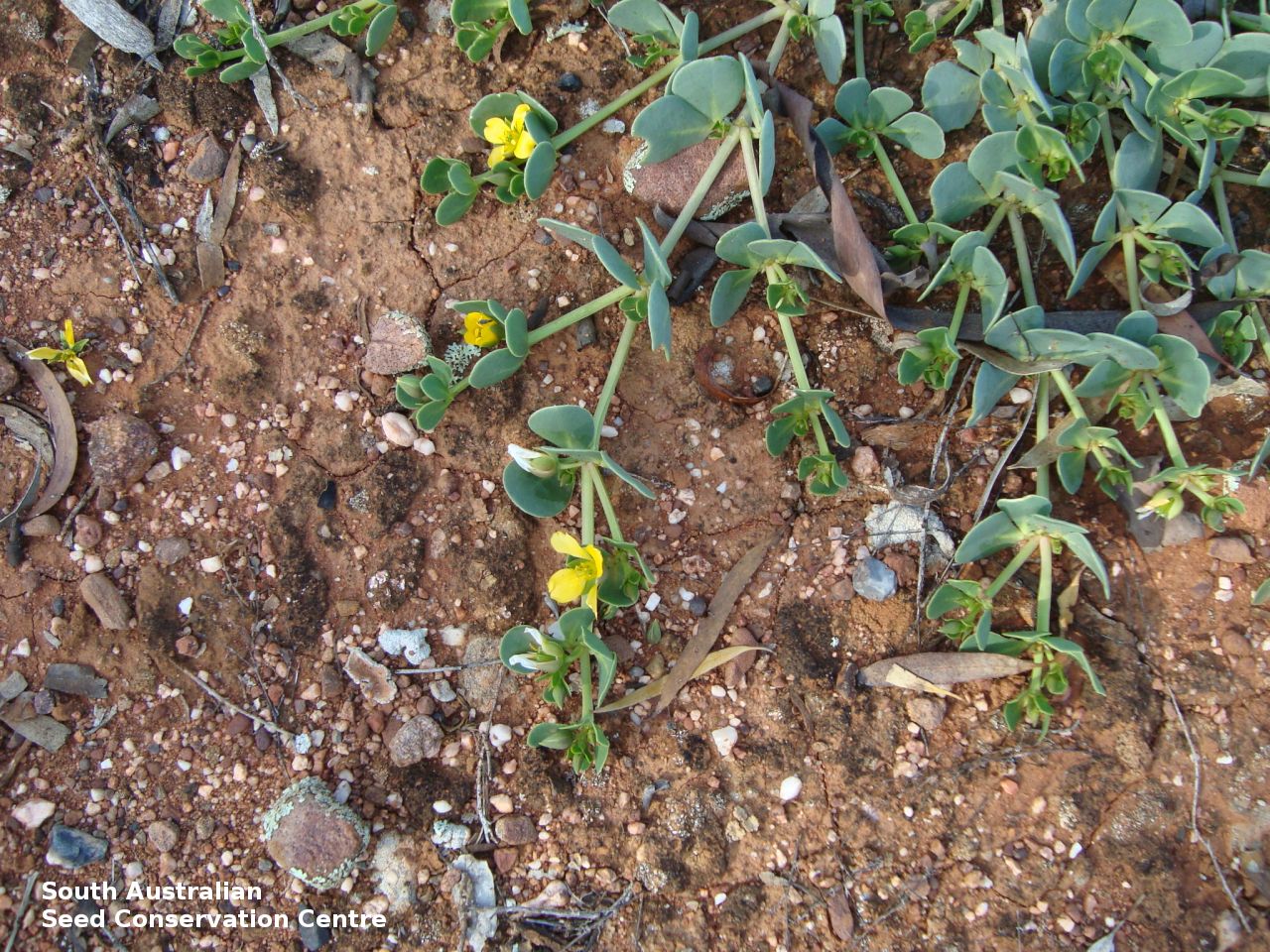
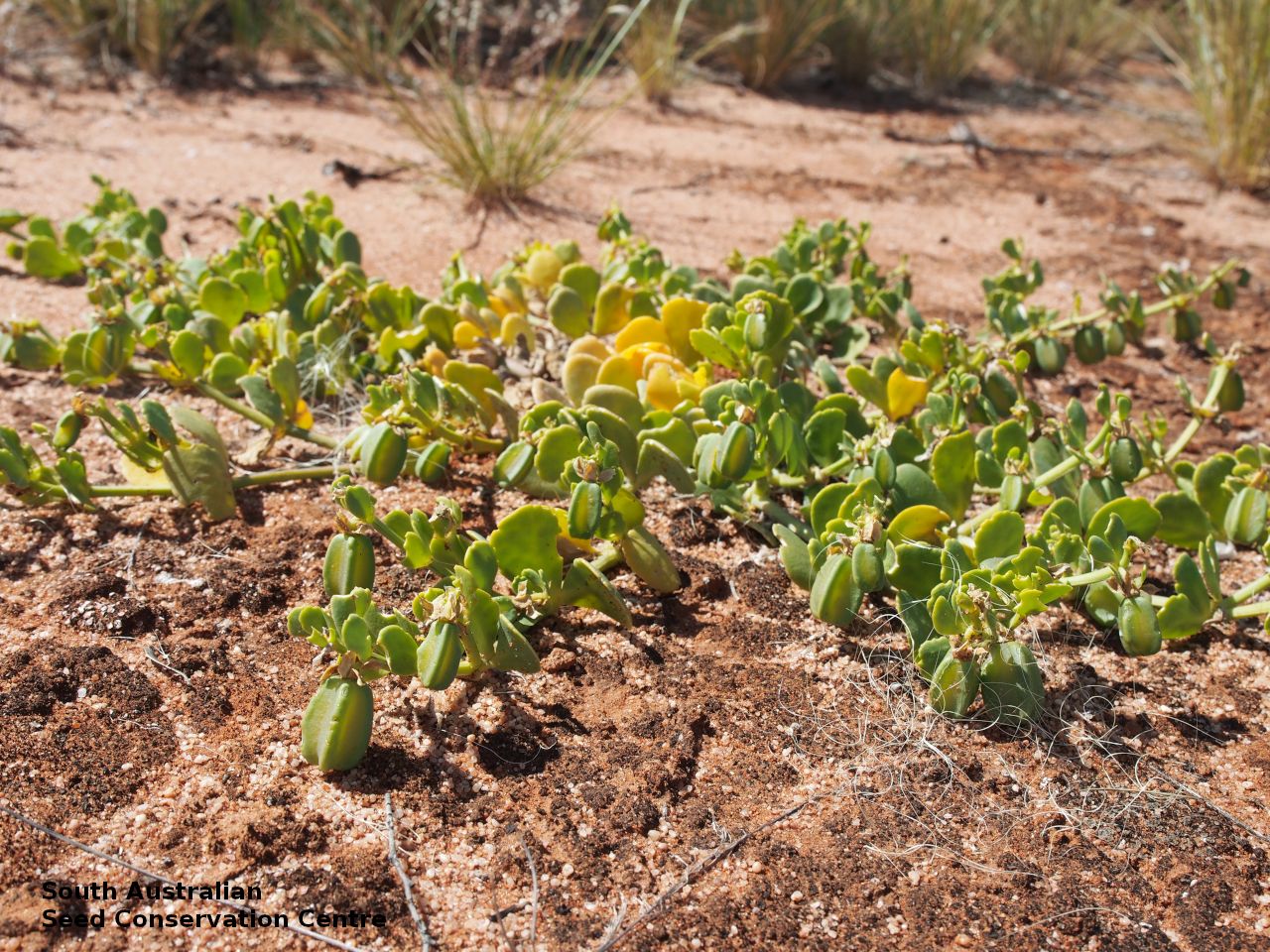
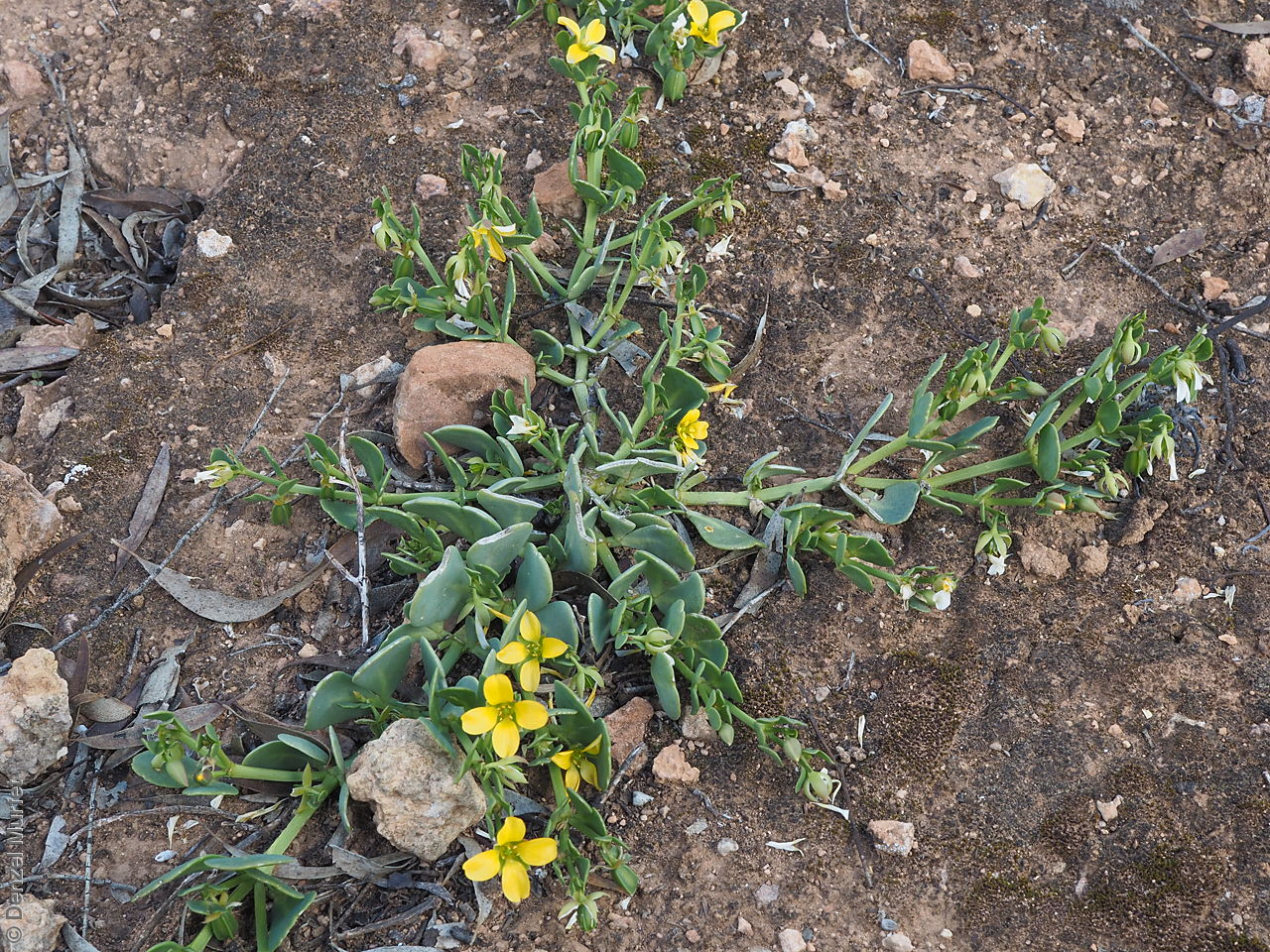
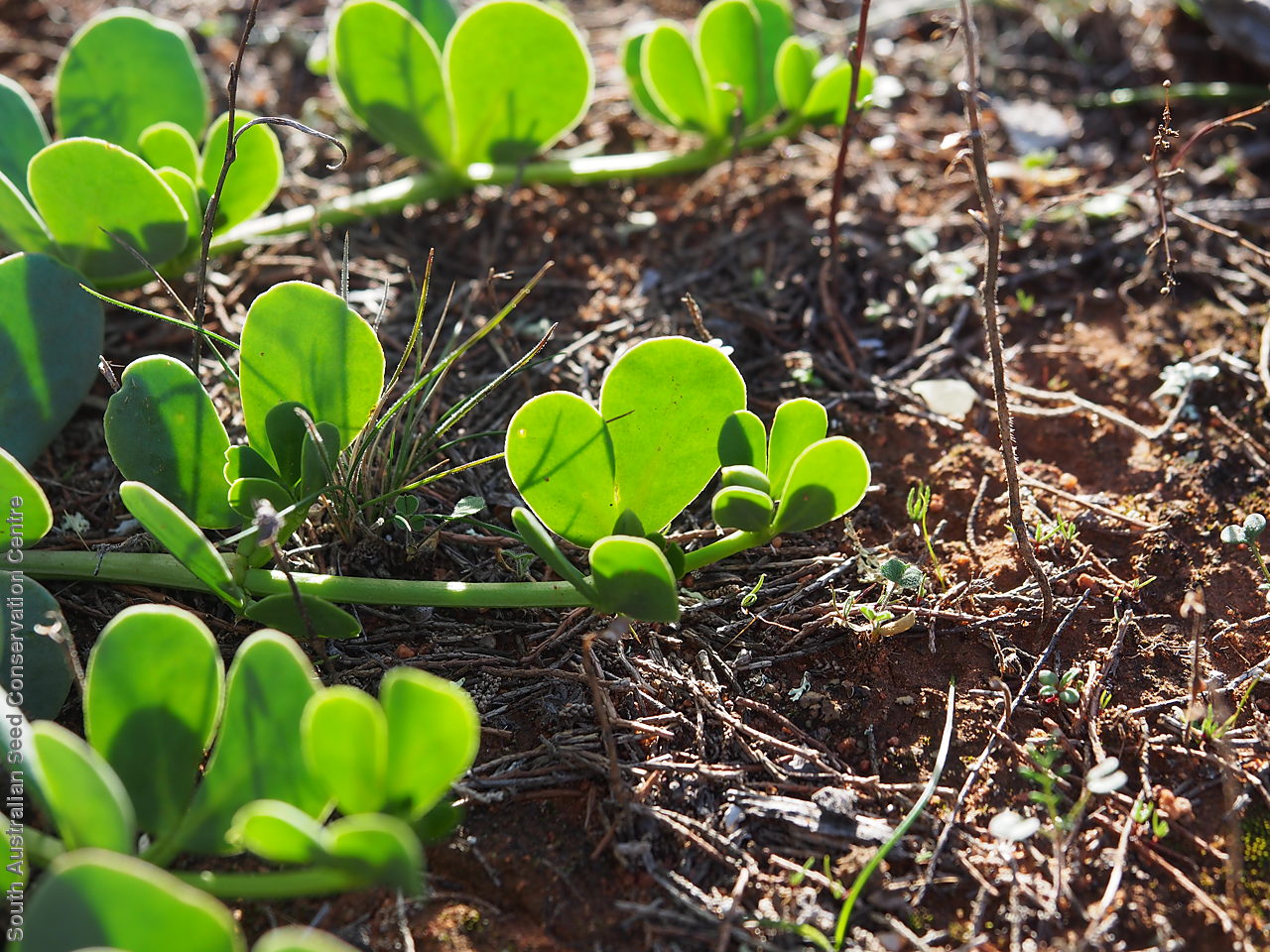
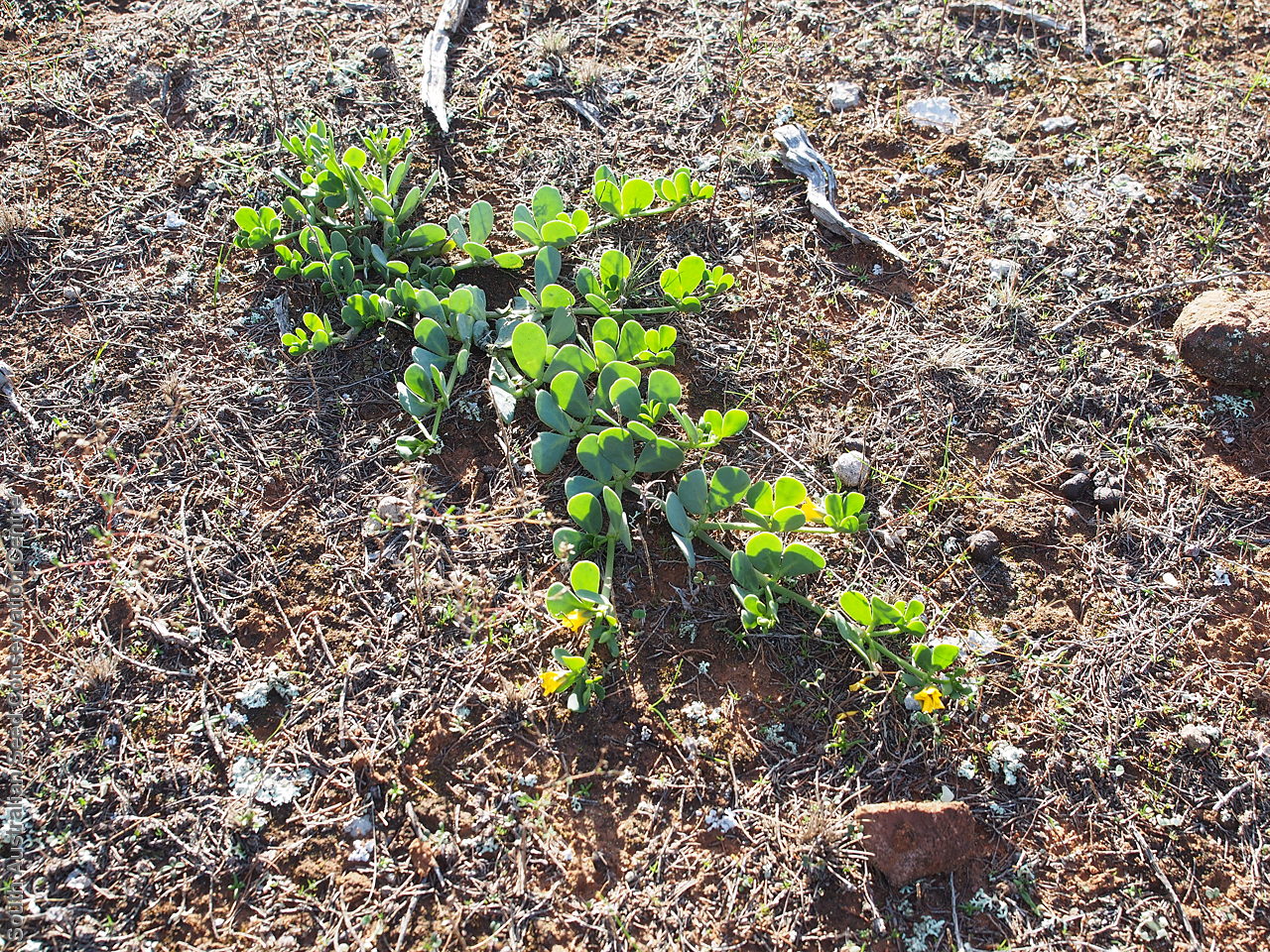
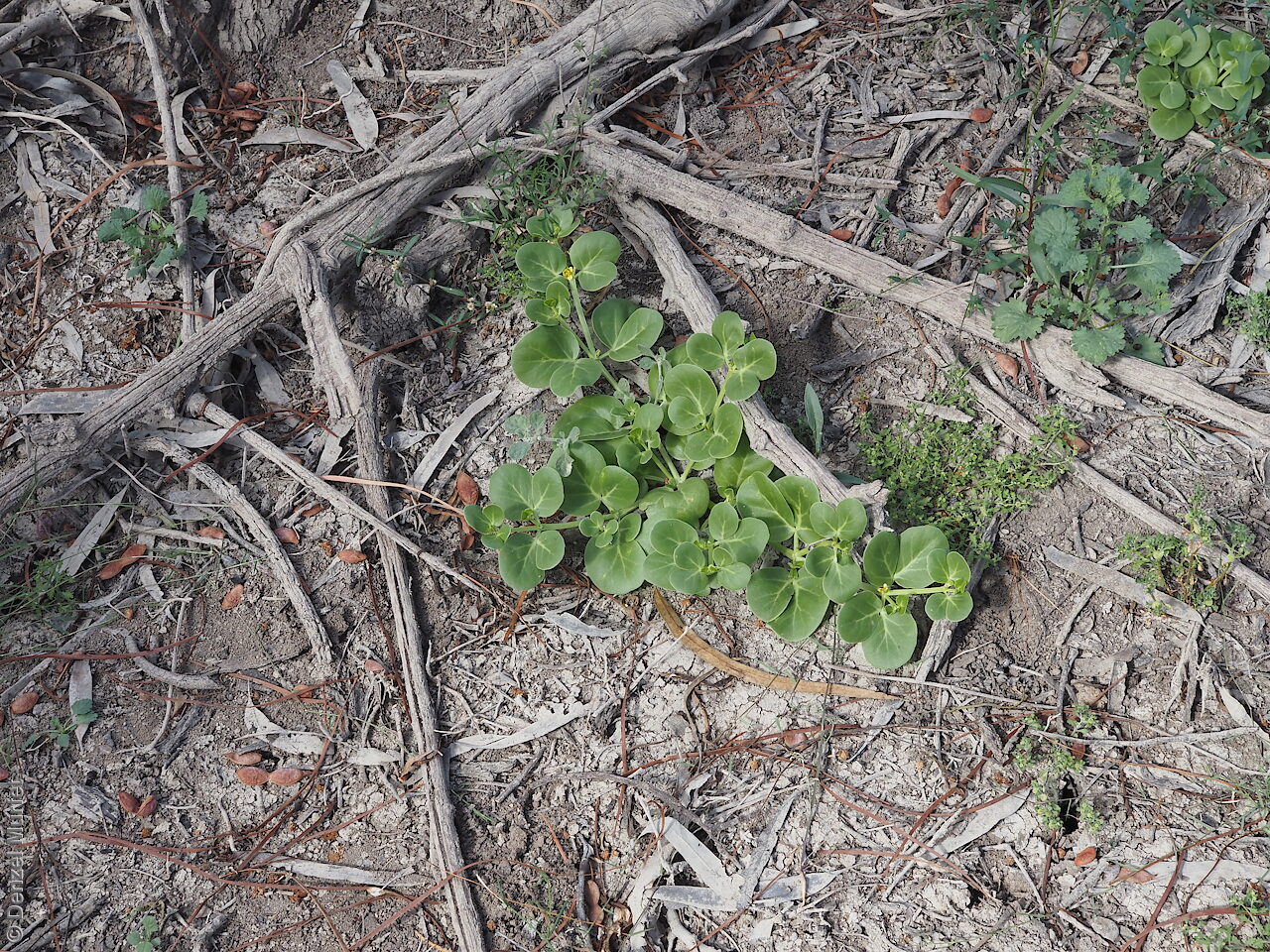
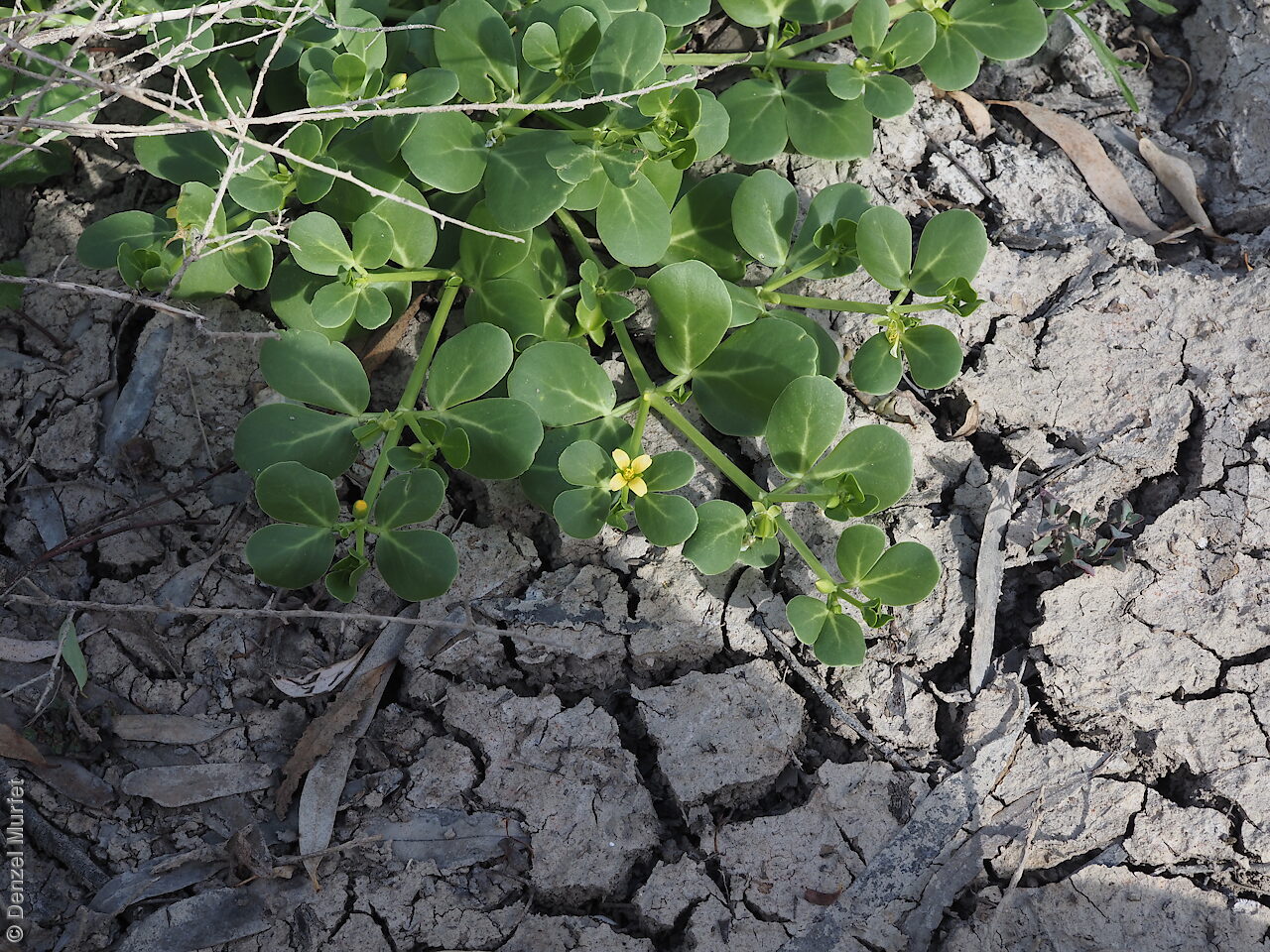
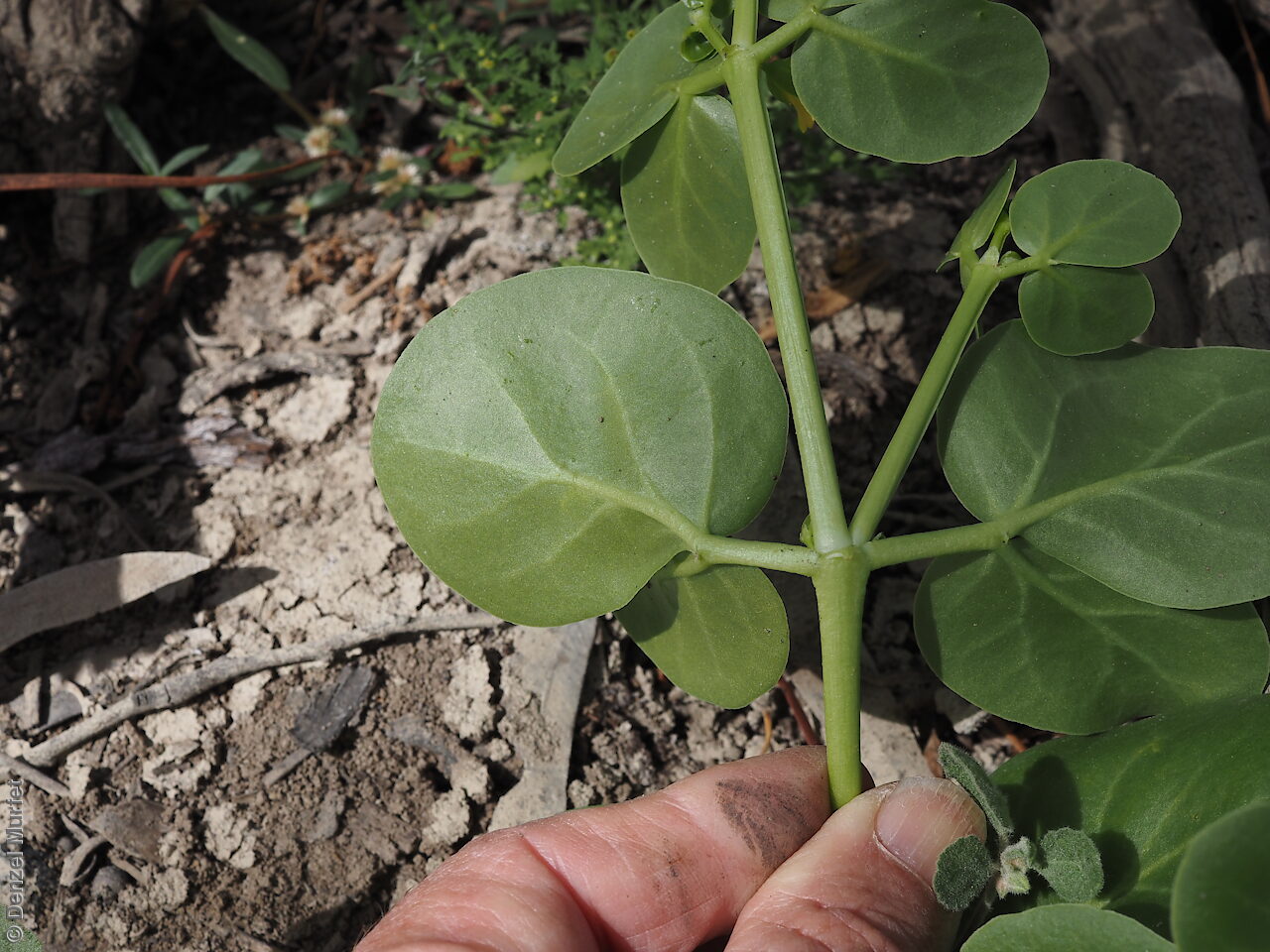

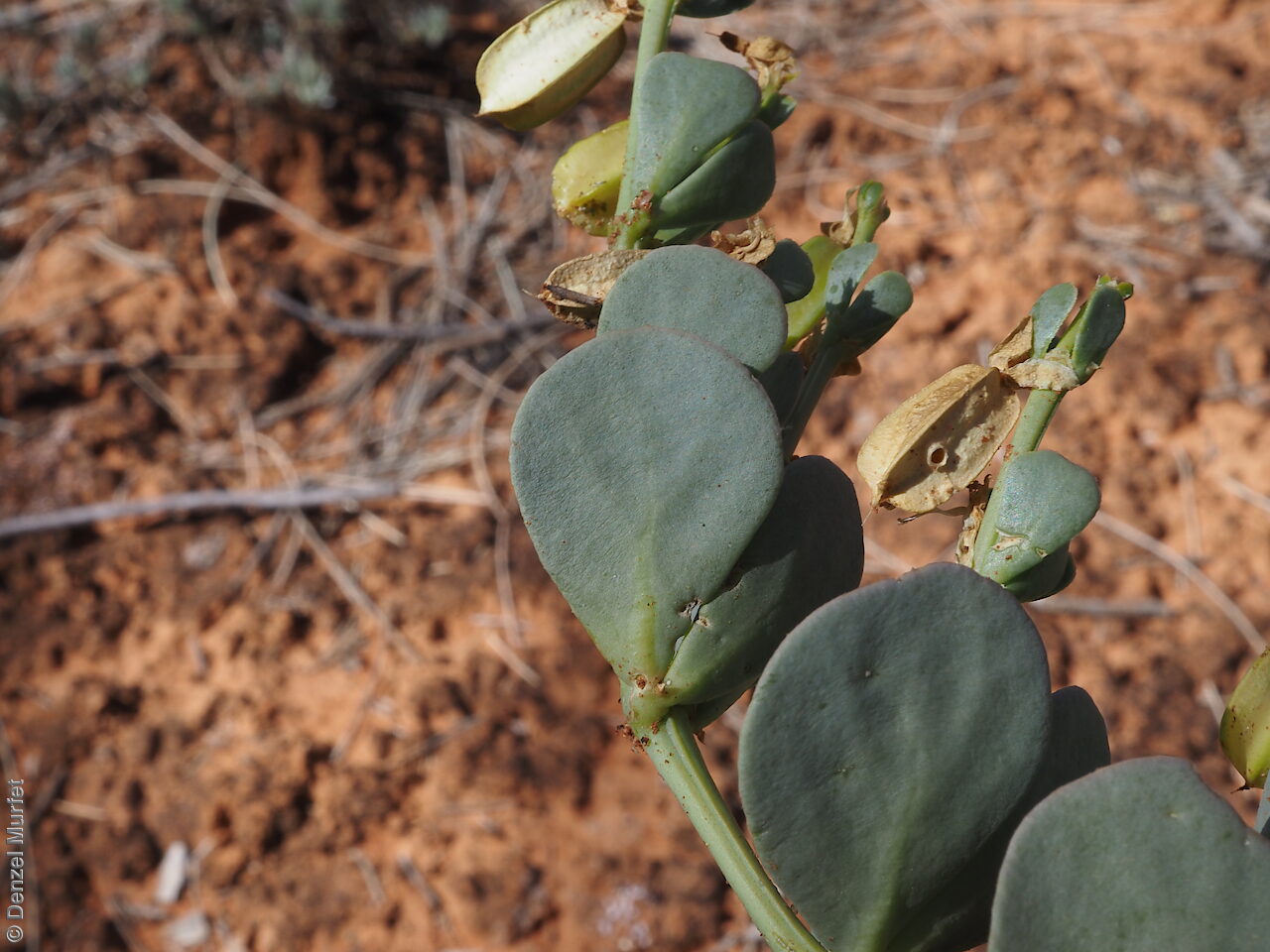
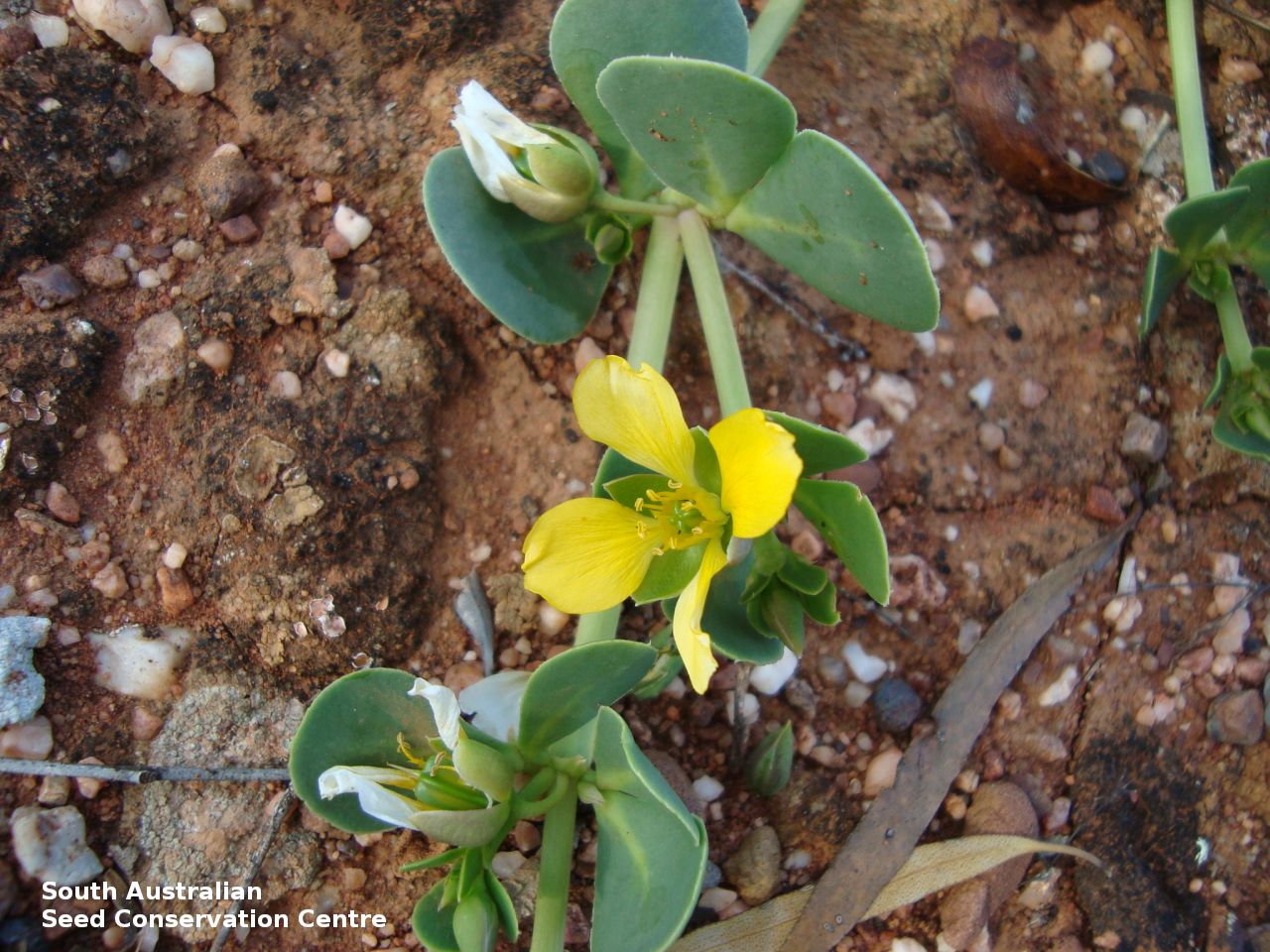
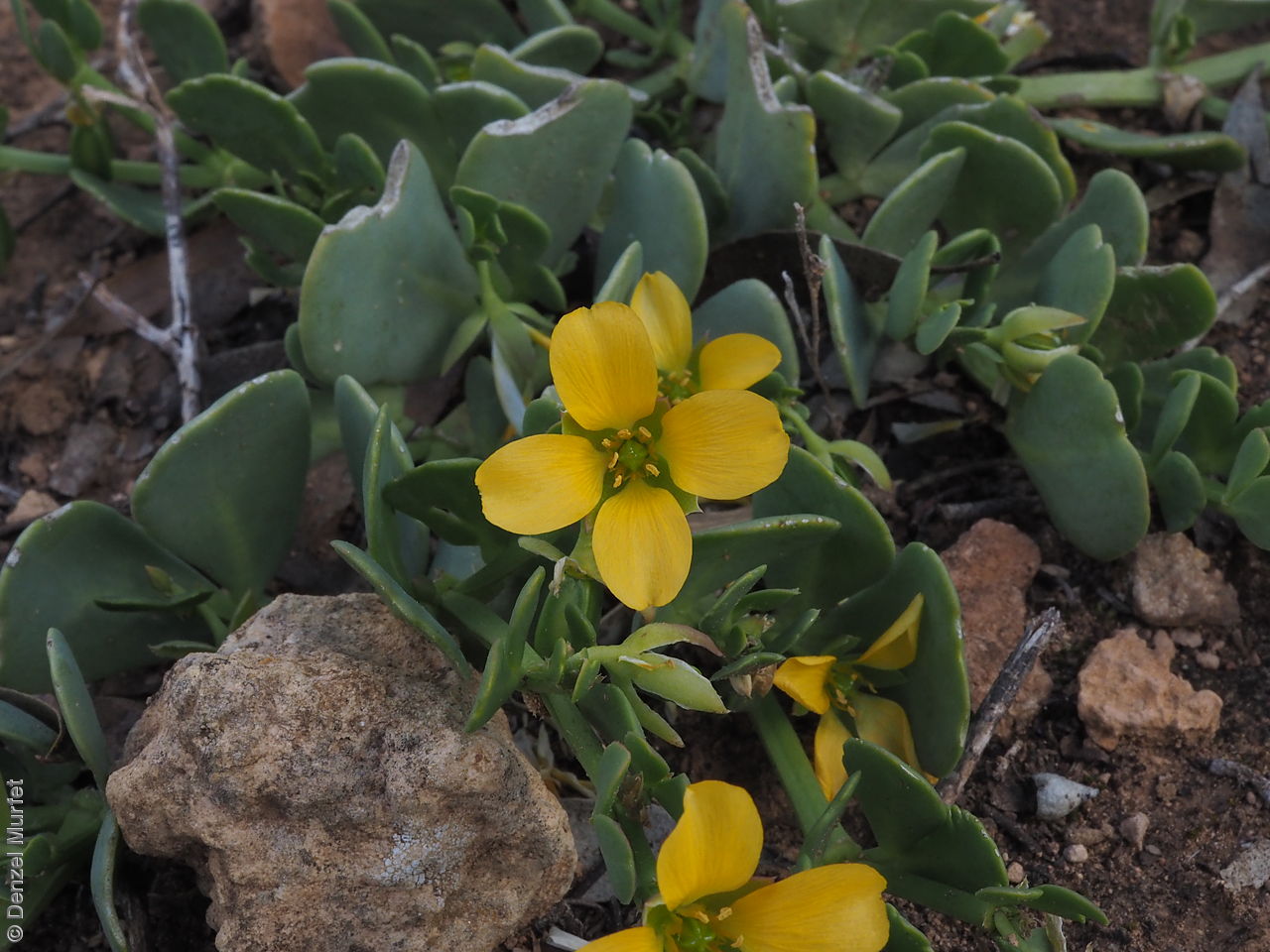
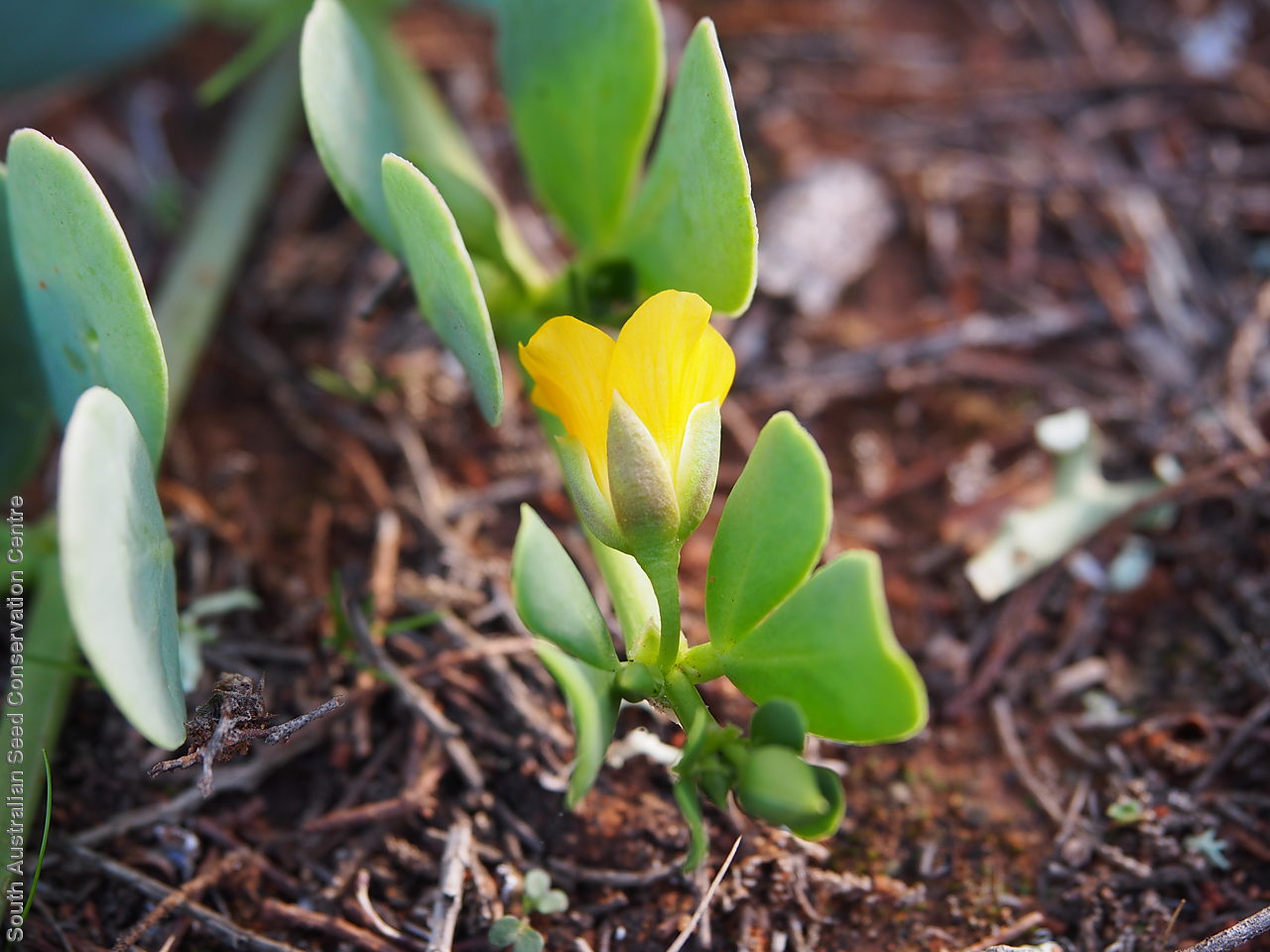


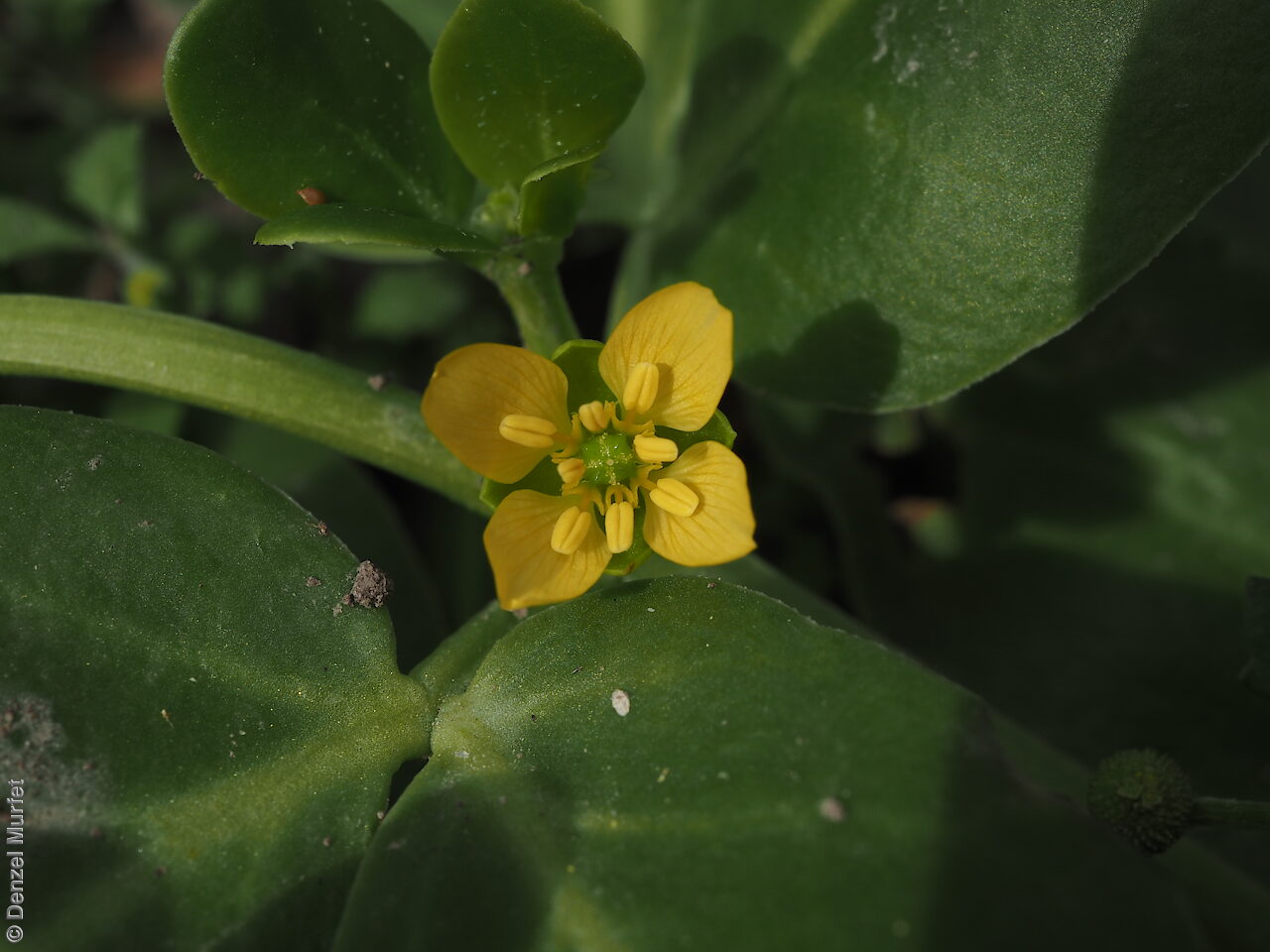
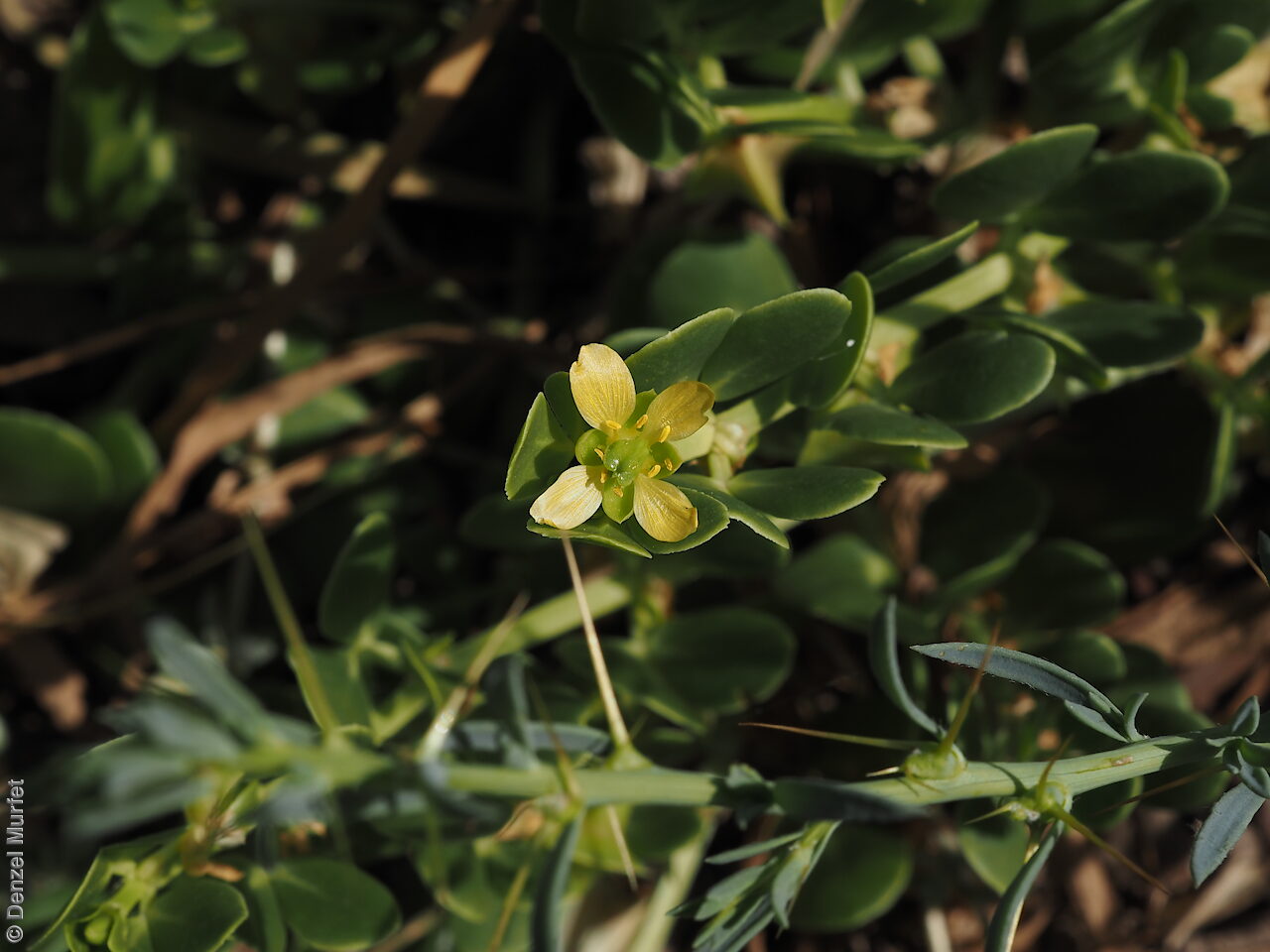
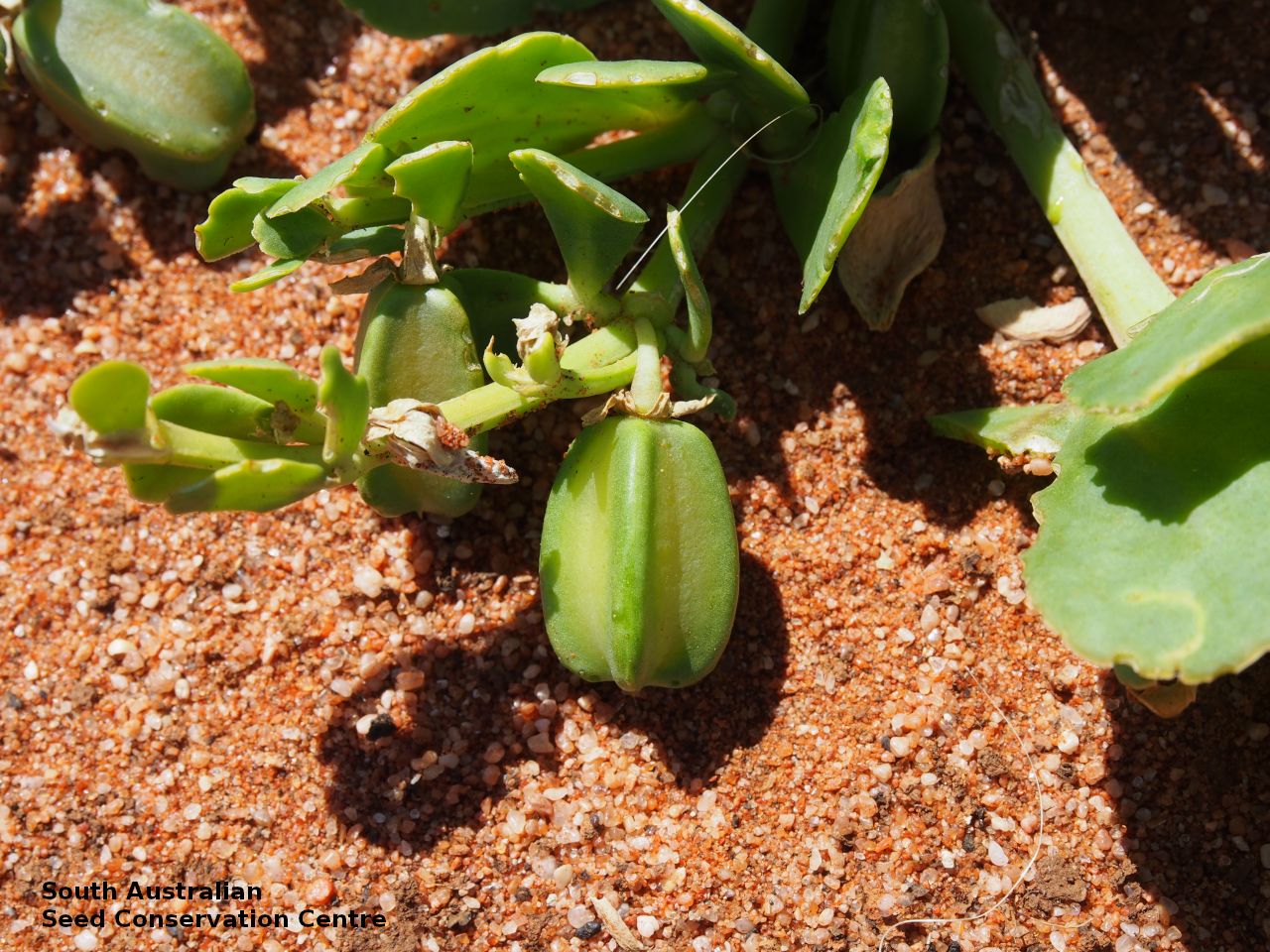
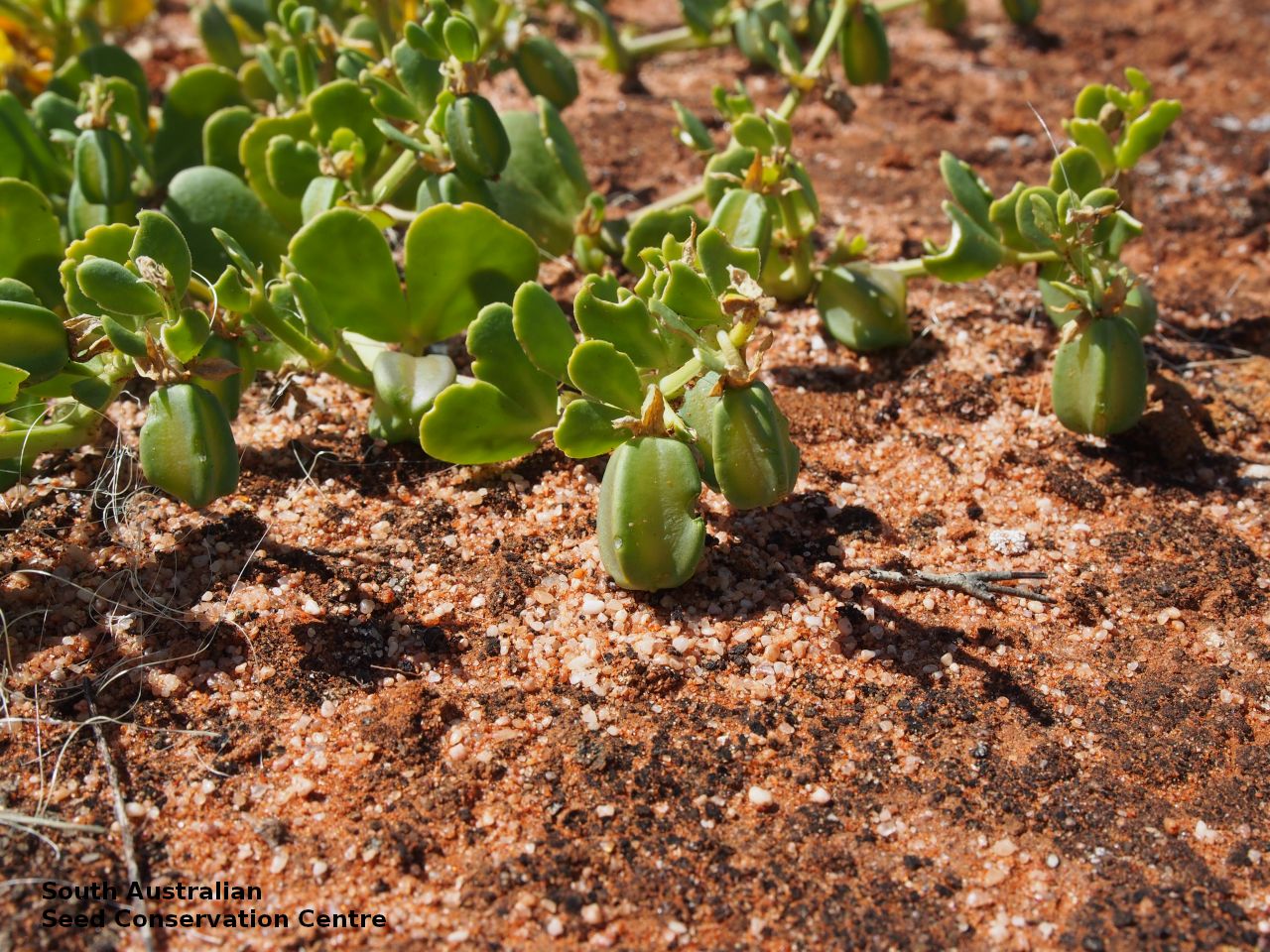
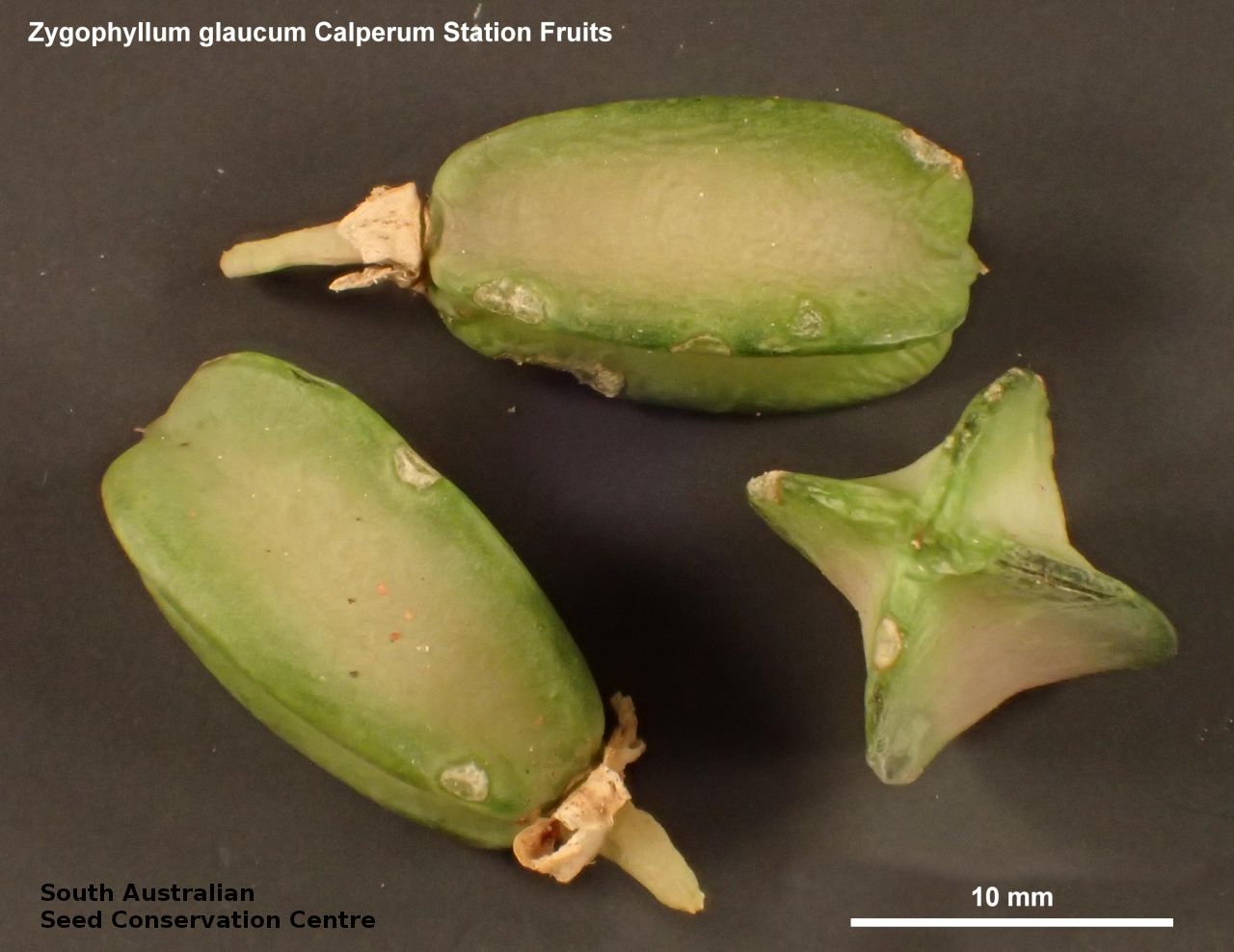
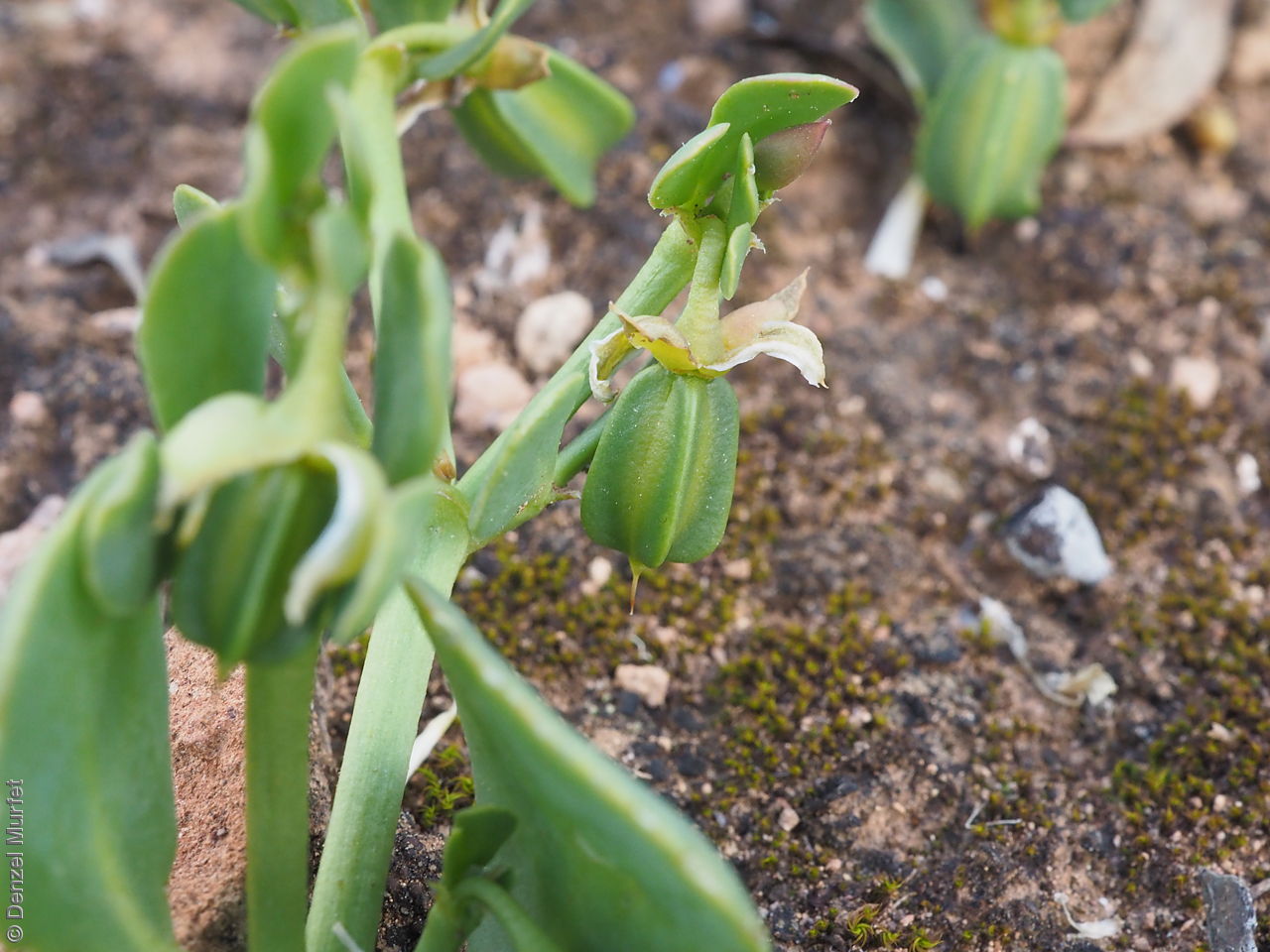
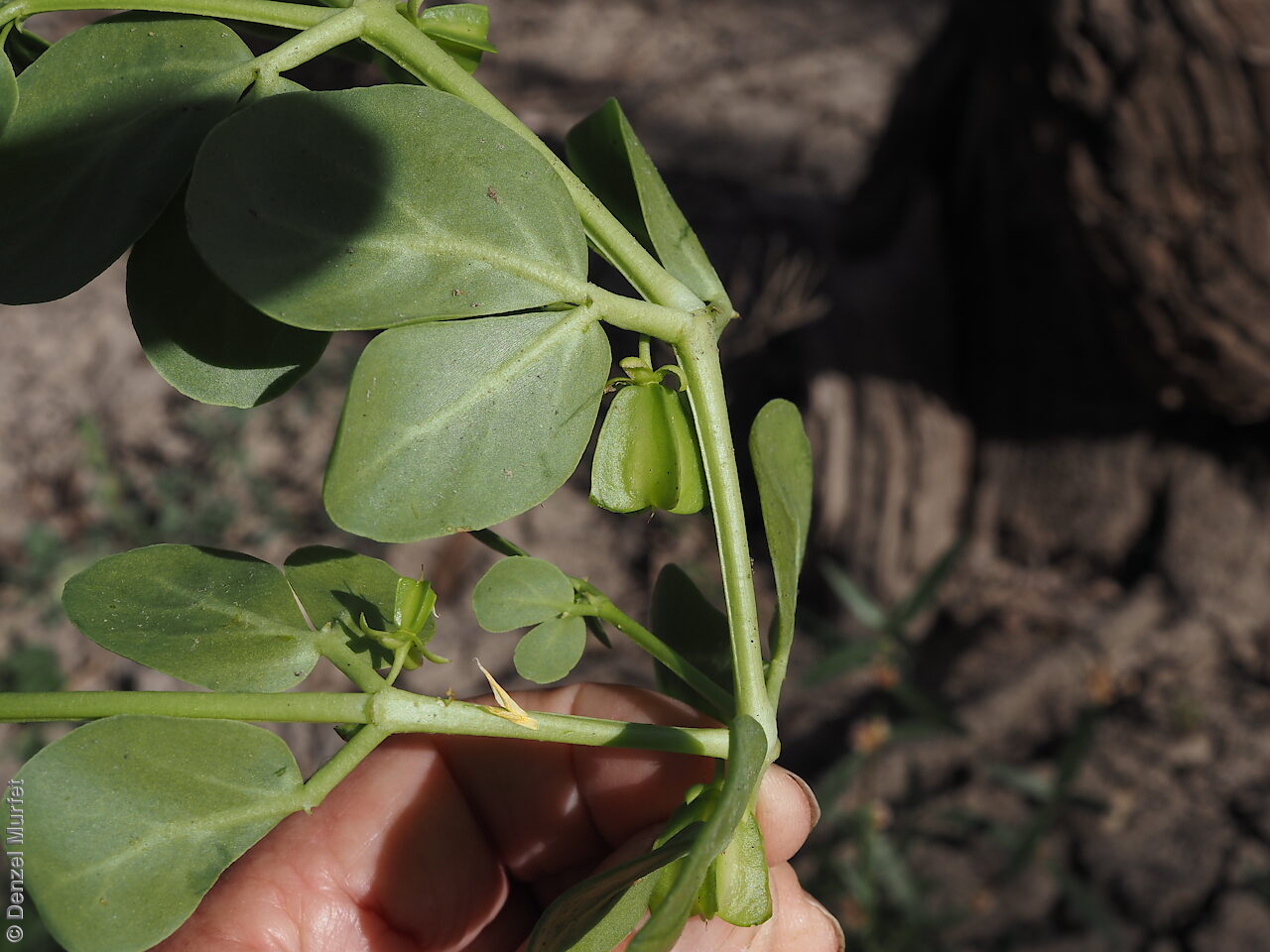
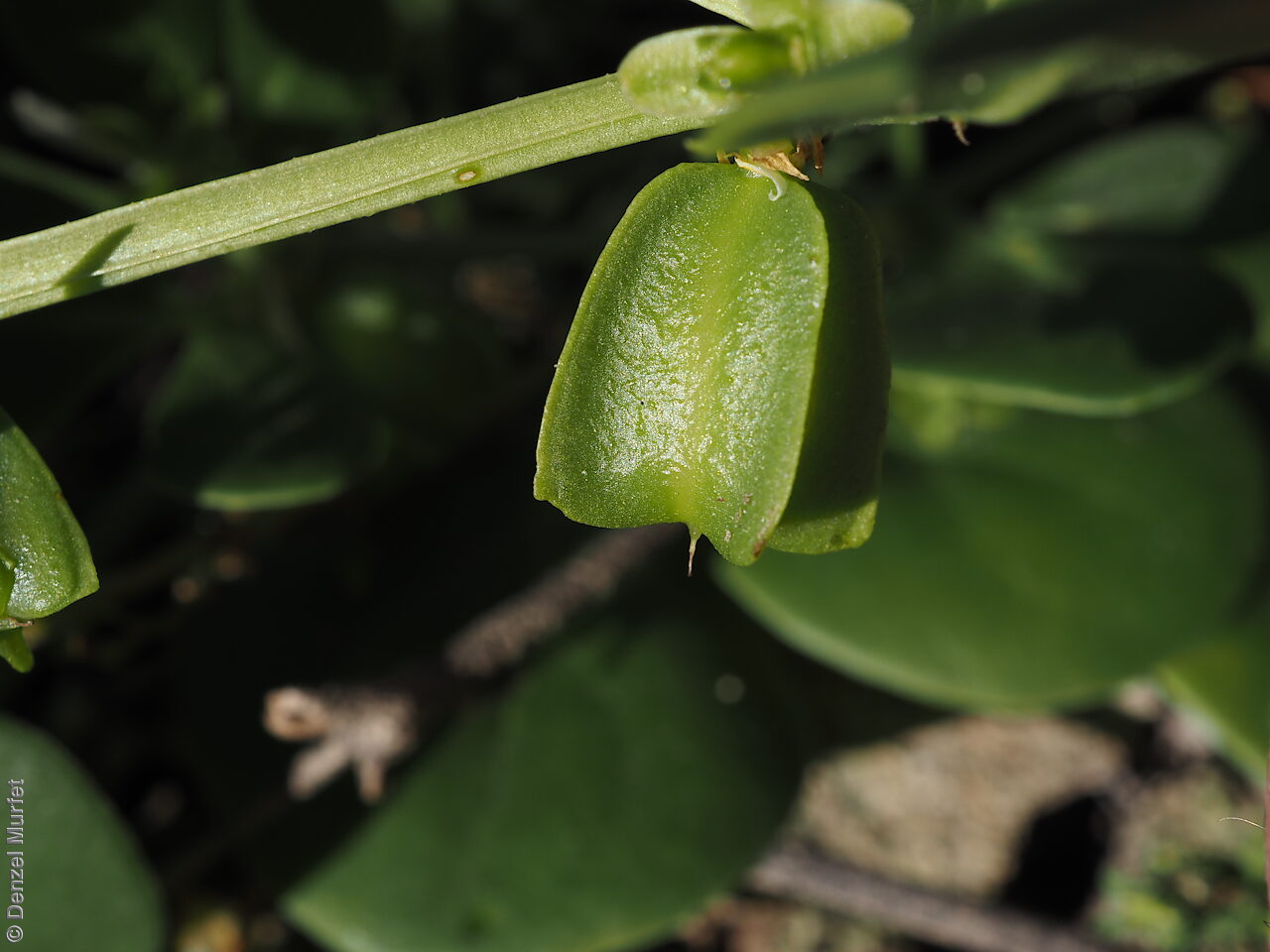
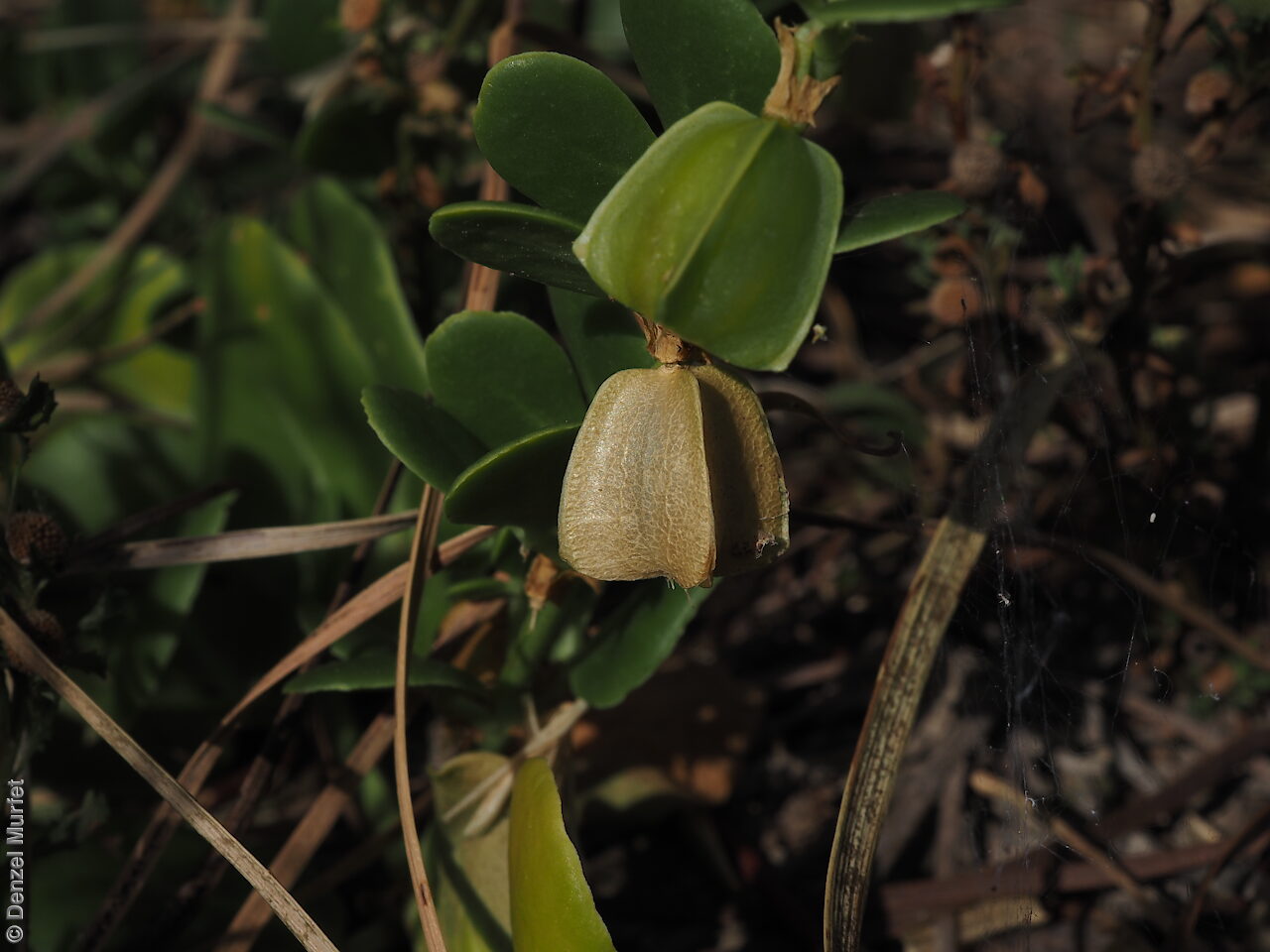
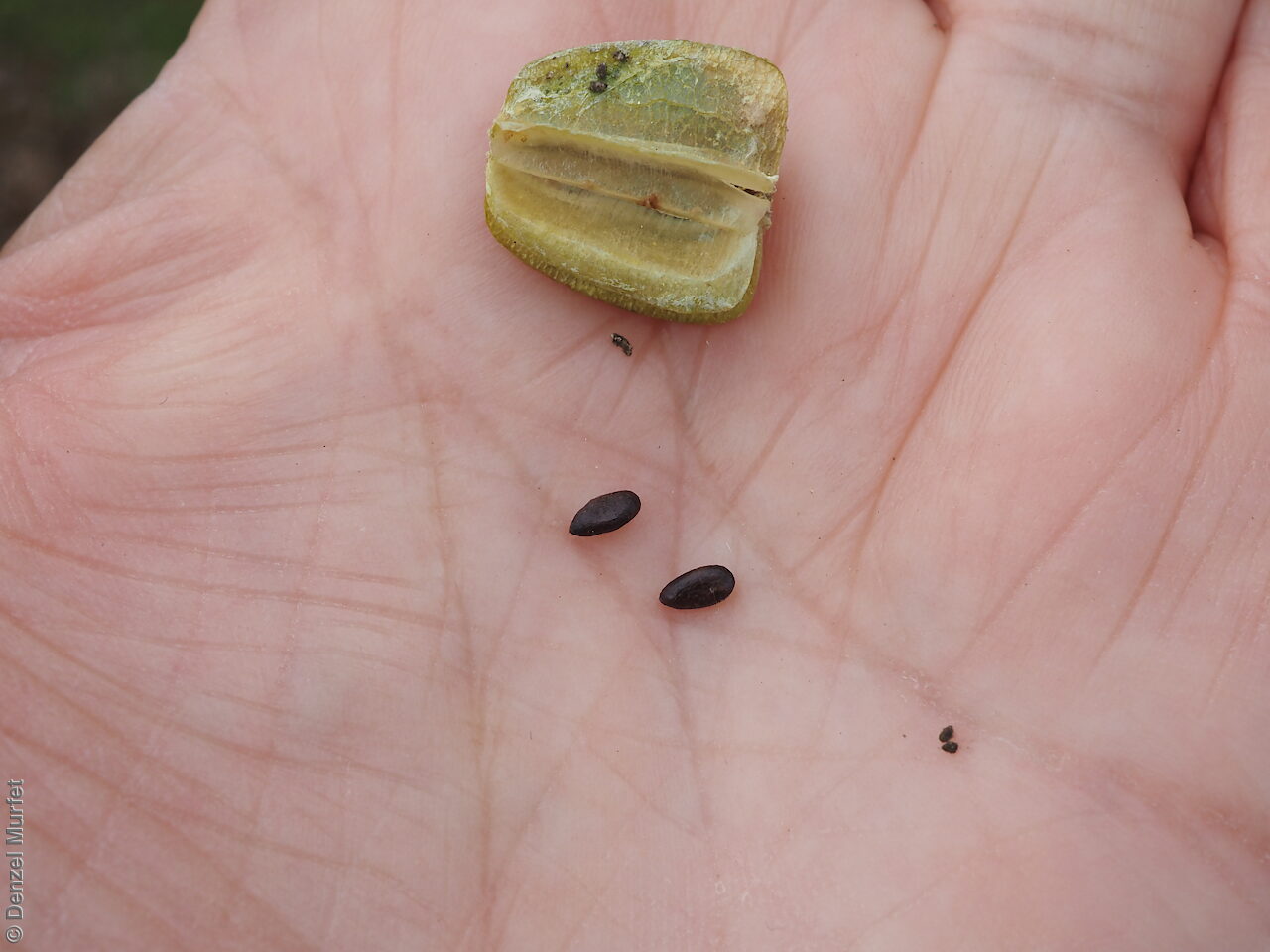
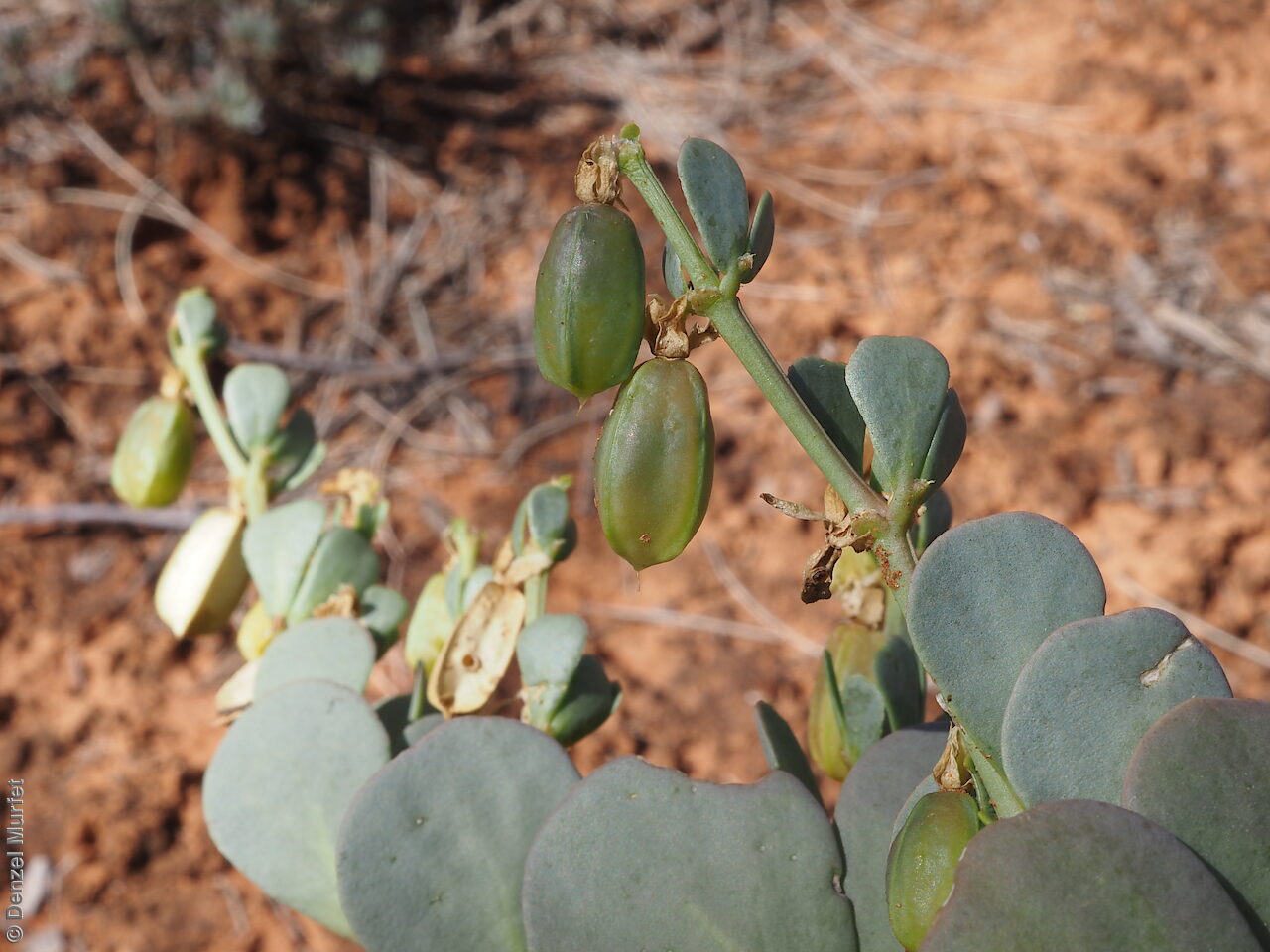
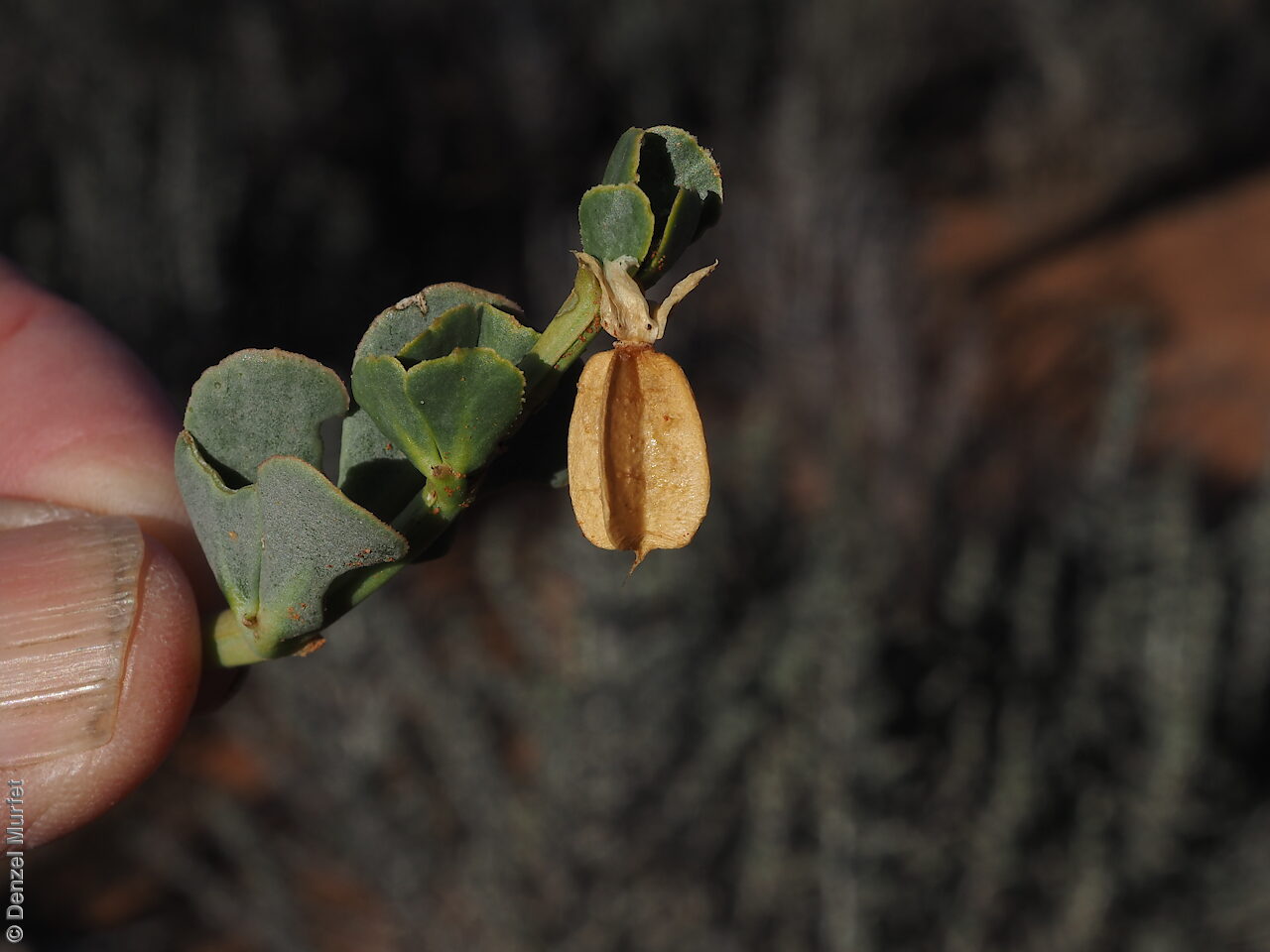
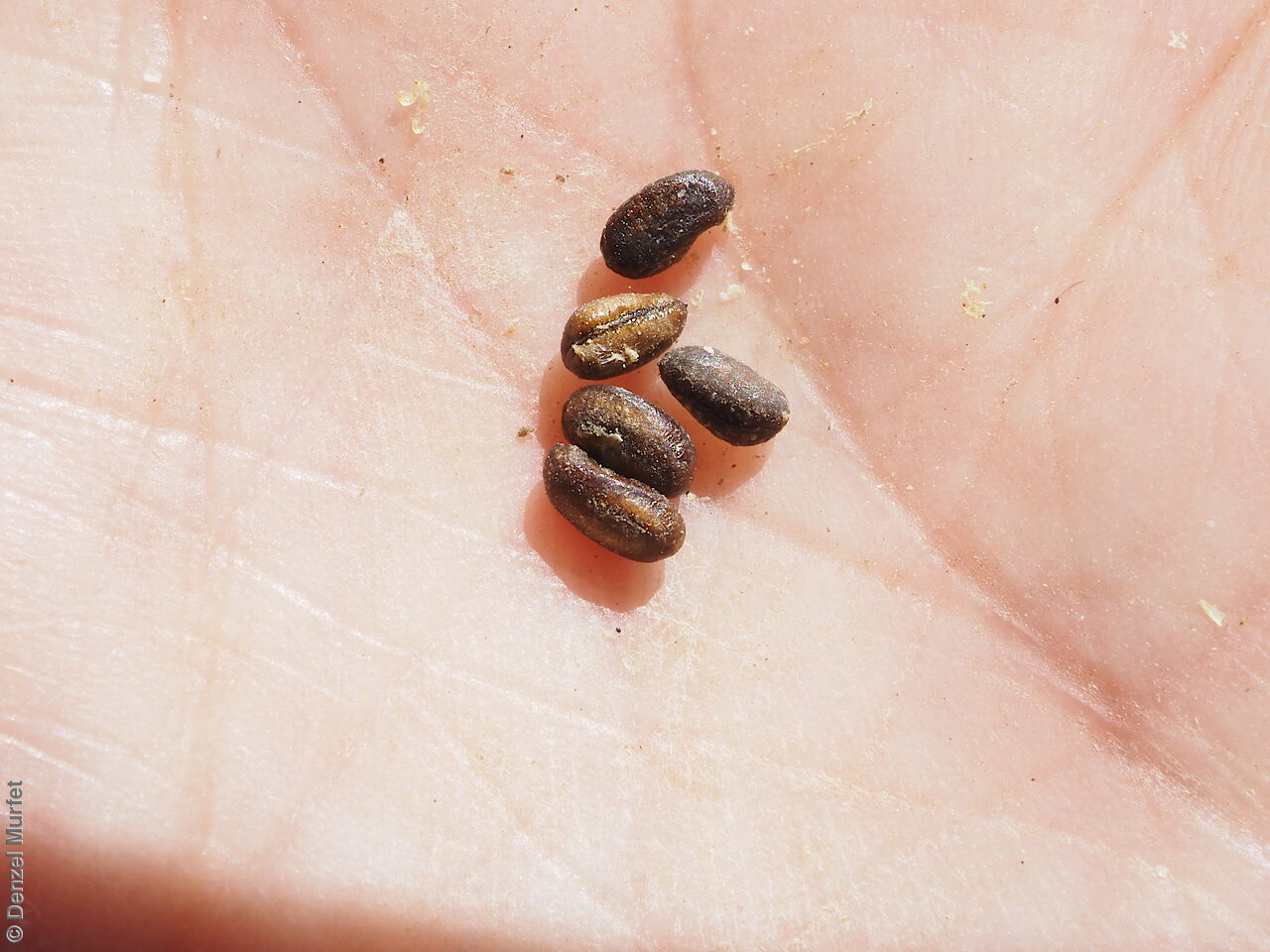
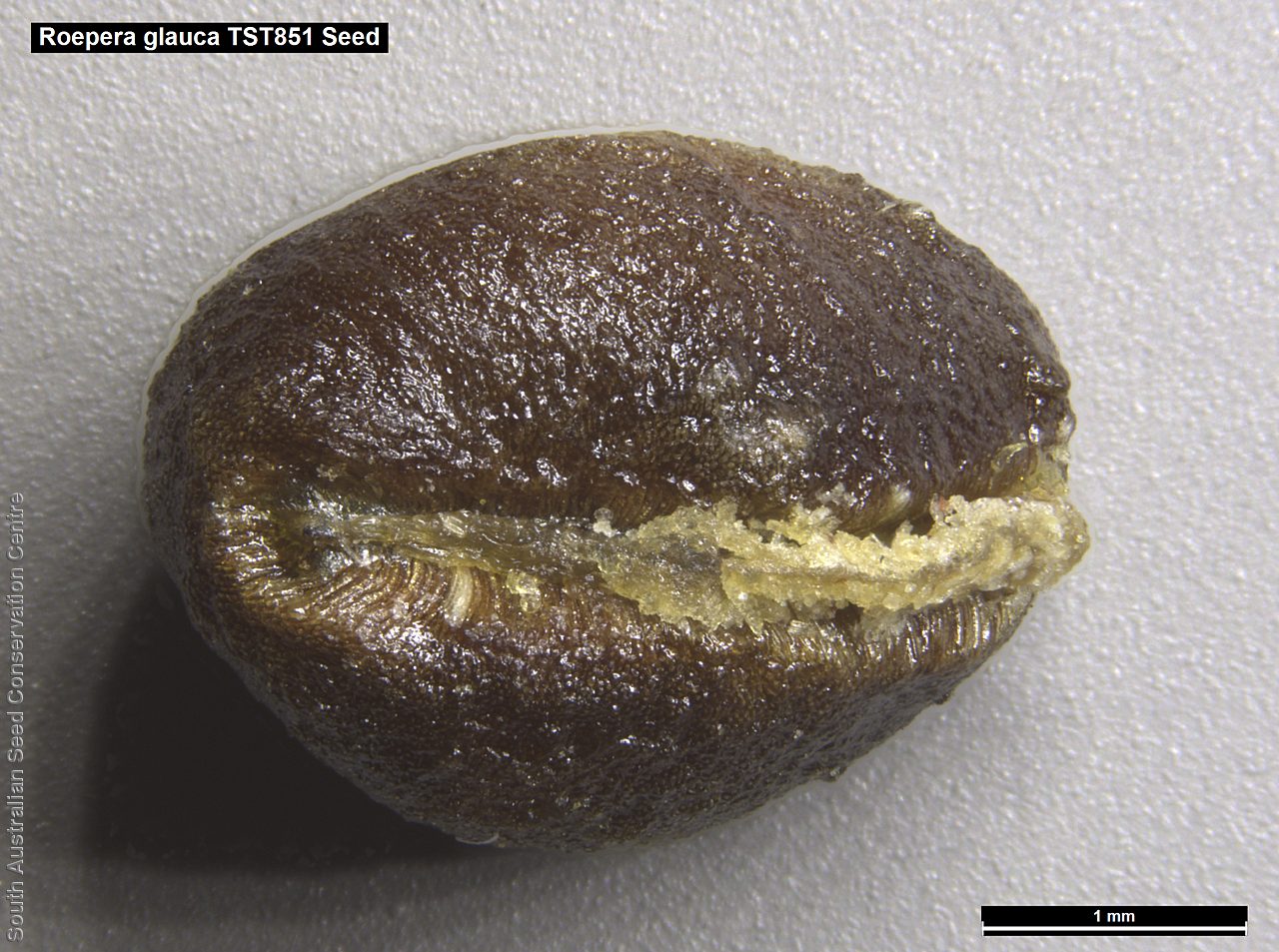
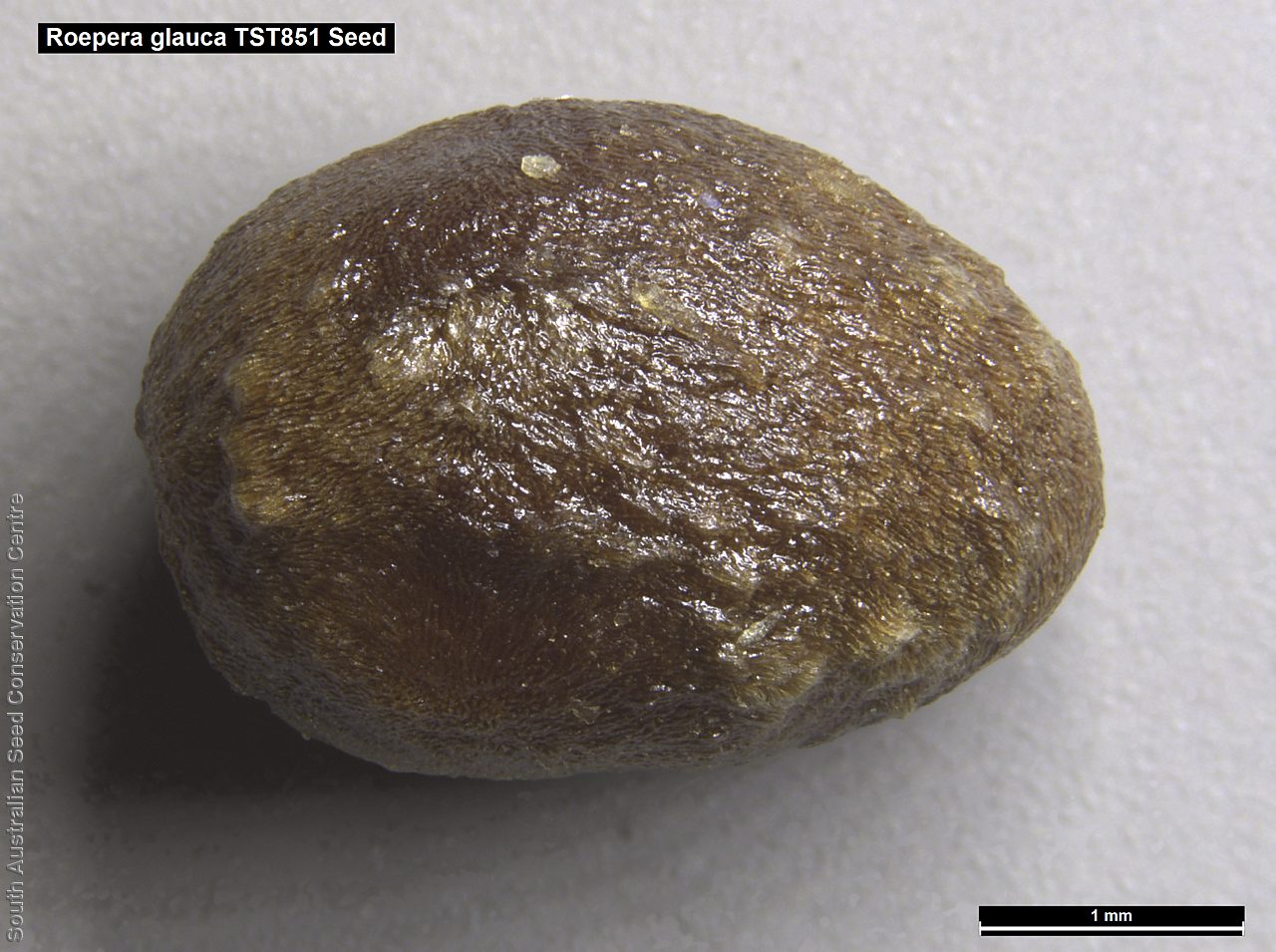
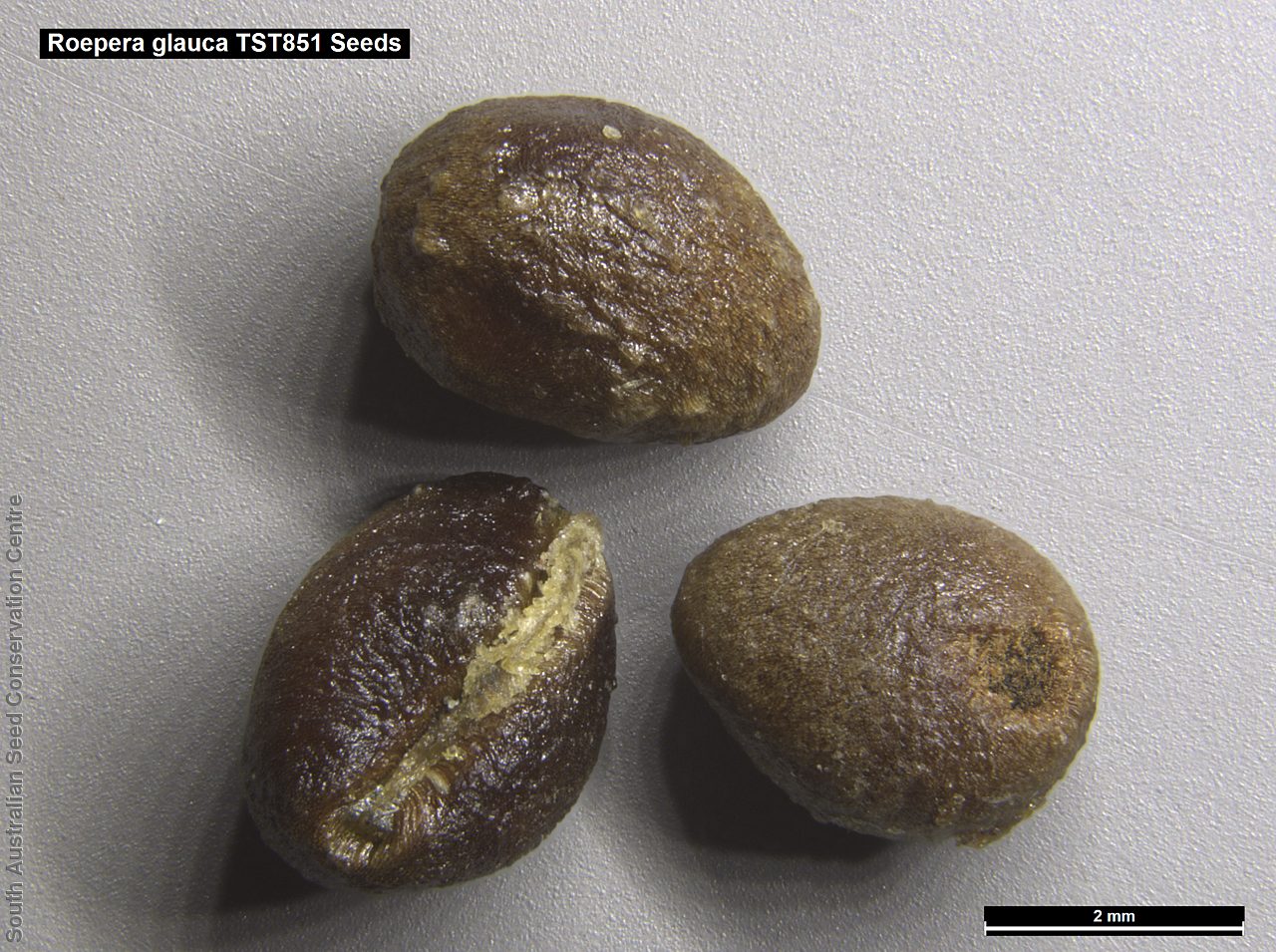
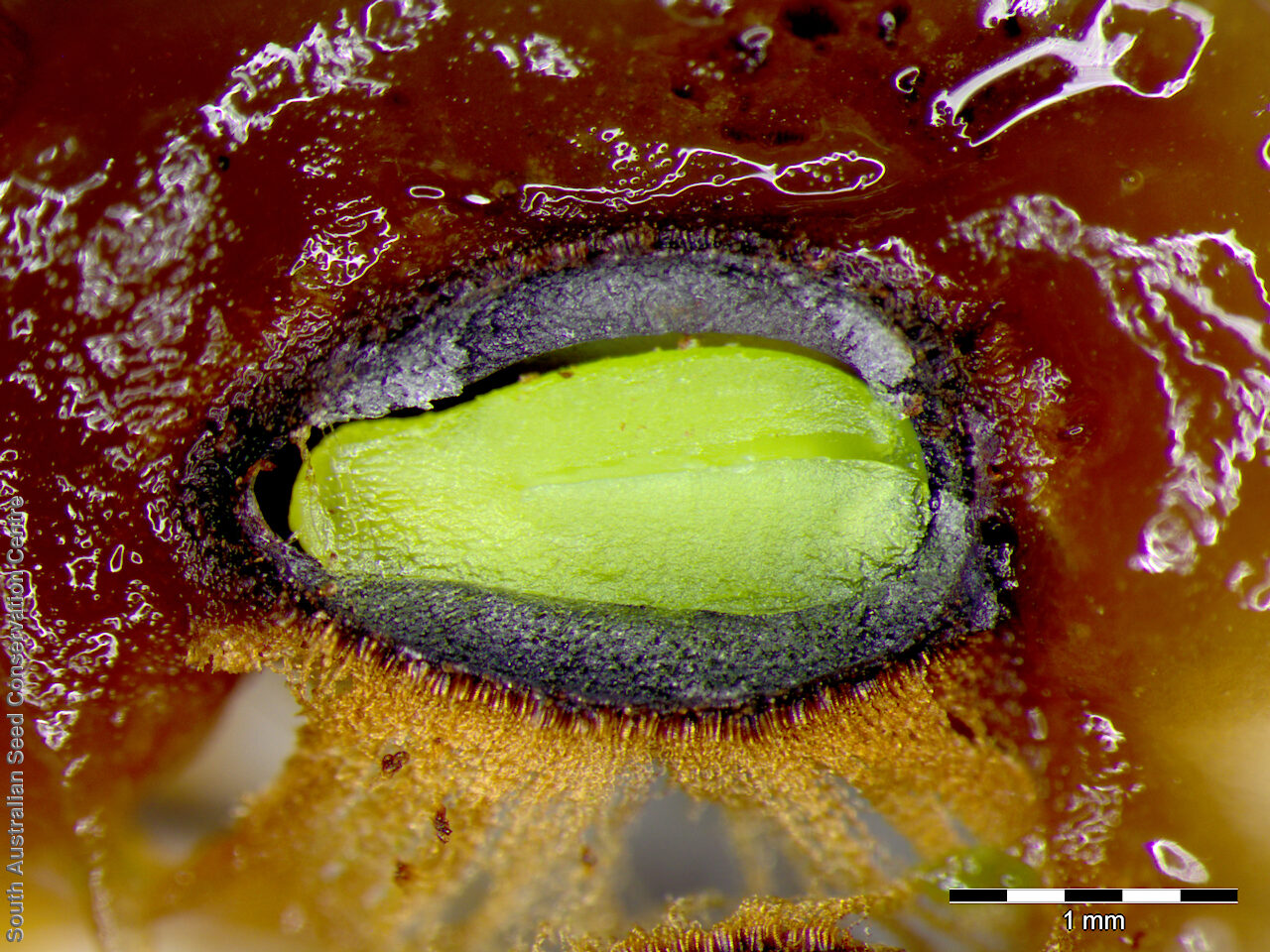
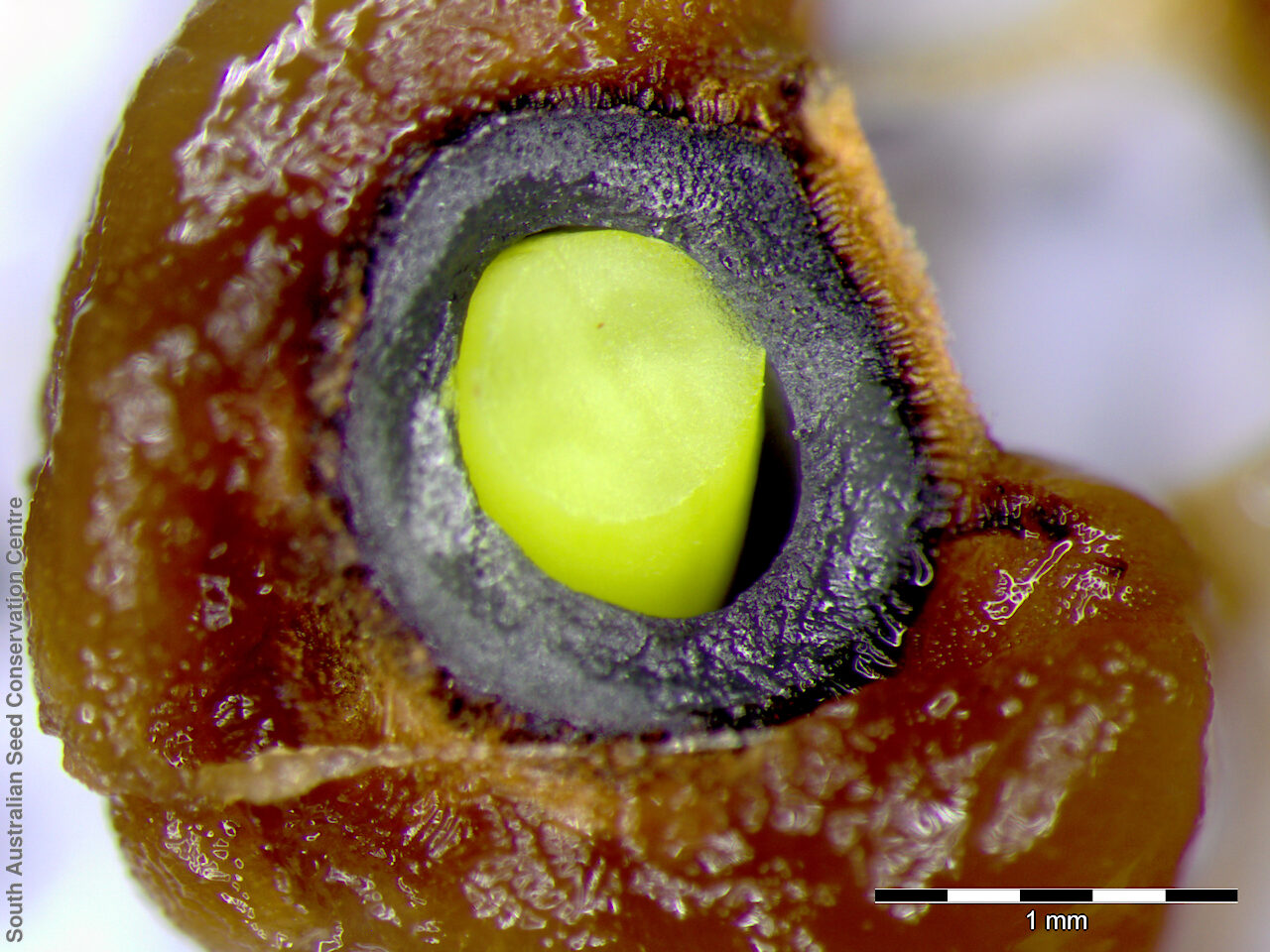

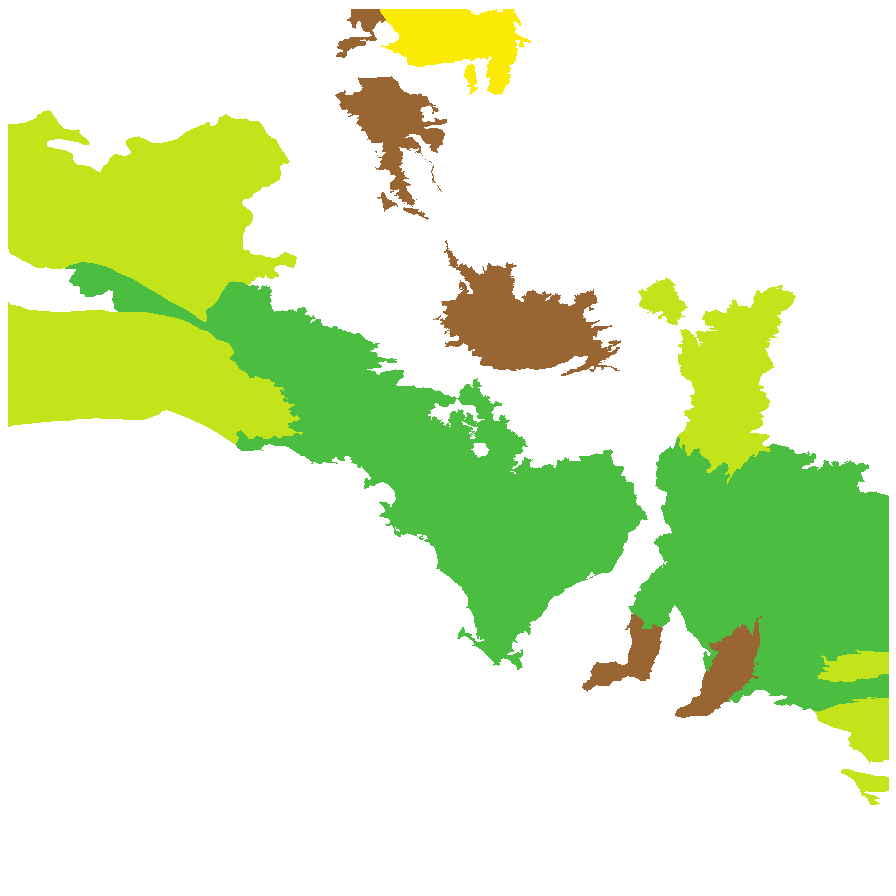
Botanical art
Prior names
Zygophyllum glaucum
Zygophyllum glaucescens, nom.illeg., nom.superfl.
Common names
Pale Twinleaf
Etymology
Roepera (formally Zygophyllum which is from the Greek 'zygon' meaning pair and 'phyllon' meaning leaf; referring to the pair of leaflets making up each leaf) is named after Johannes August Christian Roeper (1801 -1885), a German botanist and physician. Glauca from the Latin 'glaucus' meaning bluish; alluding to the bluish appearance of the plant.
Distribution and status
Found in the southern part of South Australia, growing in a variety of soils such as loamy sands and gypseous sands in mallee communities. Also found in all mainland states. Native. Common in South Australia. Rare in the Northern Territory and Queensland. Common in the other states.
Herbarium regions: North Western, Lake Eyre, Nullarbor, Flinders Ranges, Eyre Peninsula, Northern Lofty, Murray, Yorke Peninsula, Southern Lofty, Green Adelaide
AVH map: SA distribution map (external link)
Plant description
Erect or ascending annual herb or perennial subshrub to 20 cm high, with erect or ascending stout branches often forming a mat up to 2 m diameter. Leaves glaucous or green, to 50 cm long. Leaflets articulate at base, oblique-obovate, to 40 mm long and 22 mm wide, fleshy, apex rounded. Inflorescence on narrow stalk in axils of leaves with bright-yellow flower. Flowering between June and December. Fruits are yellow-brown ovoid-oblong 4-angled capsule, to 20 mm long, drooping, rounded at apex, with a short apical point and 3-5 seeds per cell. Seeds are brown, ovoid to round to 3.5 mm long and 2.8 mm wide, with a long narrow aril. Seed embryo type is spatulate fully developed.
Seed collection and propagation
Collect seeds between August and February. Collect semi-dried and dried capsules by running your hands through the stems of the plant. Mature fruits will come off easily and will have a hard and dark seed inside each segment. Place the capsules in a tray and leave to dry for 1 to 2 weeks, depending on how green the fruit is. Then rub the dried capsules to dislodge the seeds. Use a sieve to remove the unwanted material. Store the seeds with a desiccant such as dried silica beads or dry rice, in an air tight container in a cool and dry place. Seed viability is usually high.
| Location | No. of seeds (weight grams) | Number of plants | Date collected | Collection number Collection location | Date stored | % Viability | Storage temperature |
|---|---|---|---|---|---|---|---|
| MSB | 2,100 (14.32 g) | 40-50 | 15-Oct-2007 | TST187 Eyre Peninsula | 100% | ||
| BGA | 2,600 (23.71 g) | 10 | 2-Nov-2009 | TST851 Eyre Peninsula | 1-Jun-2010 | 90% | -18°C |
Number of plants: This is the number of plants from which the seeds were collected.
Collection location: The Herbarium of South Australia's region name.
% Viability: Percentage of filled healthy seeds determined by a cut test or x-ray.